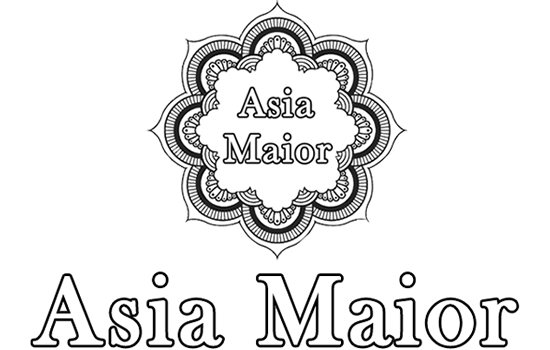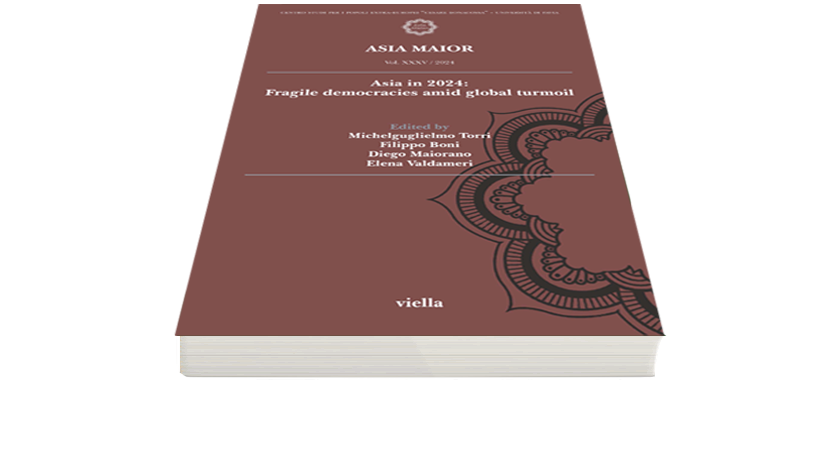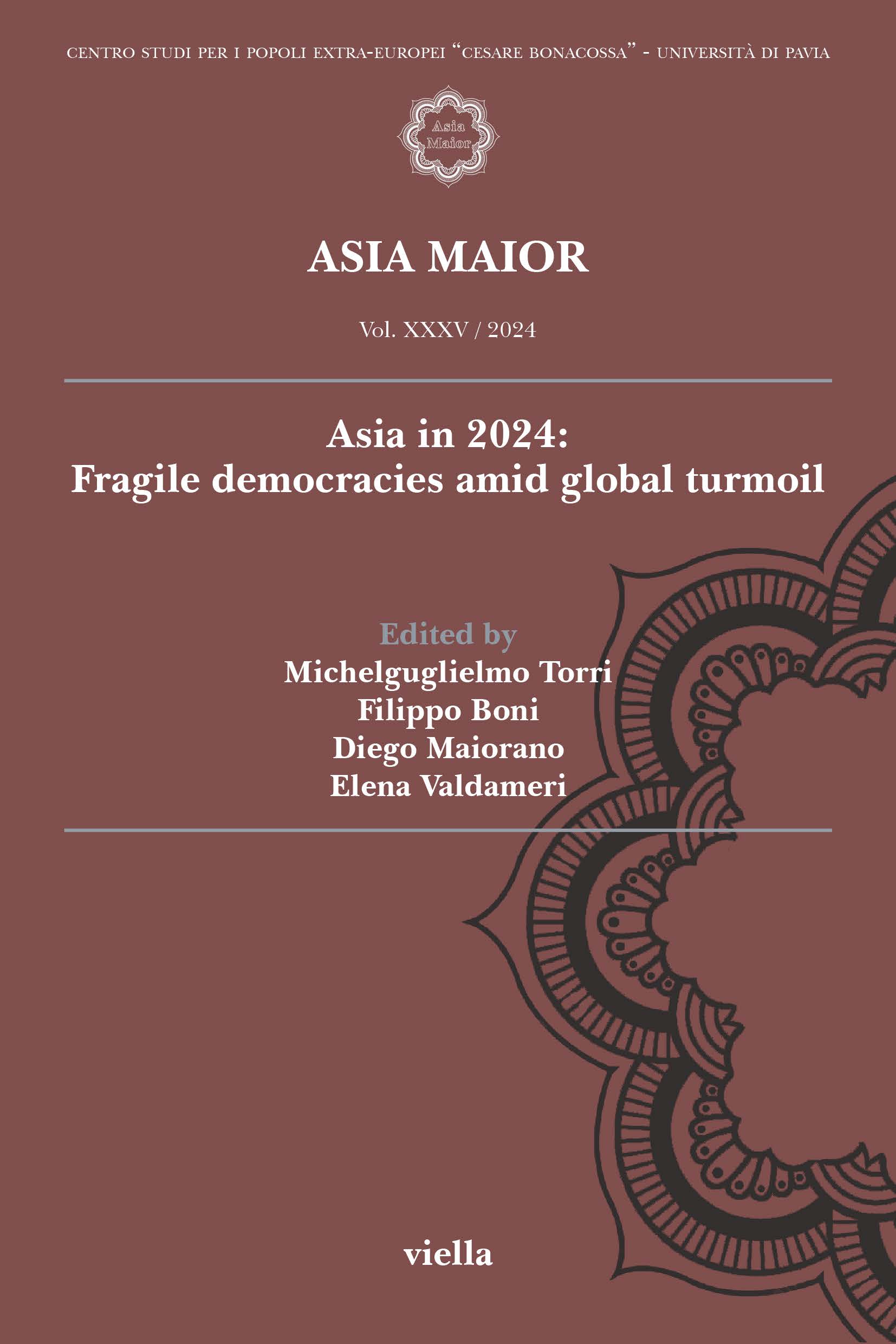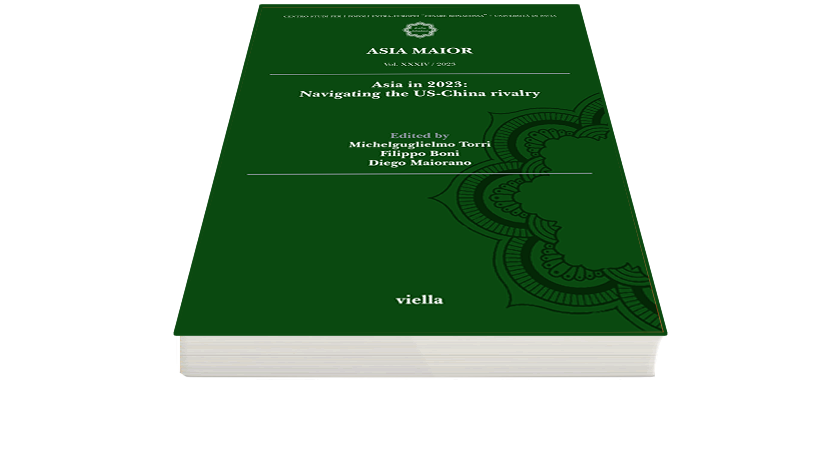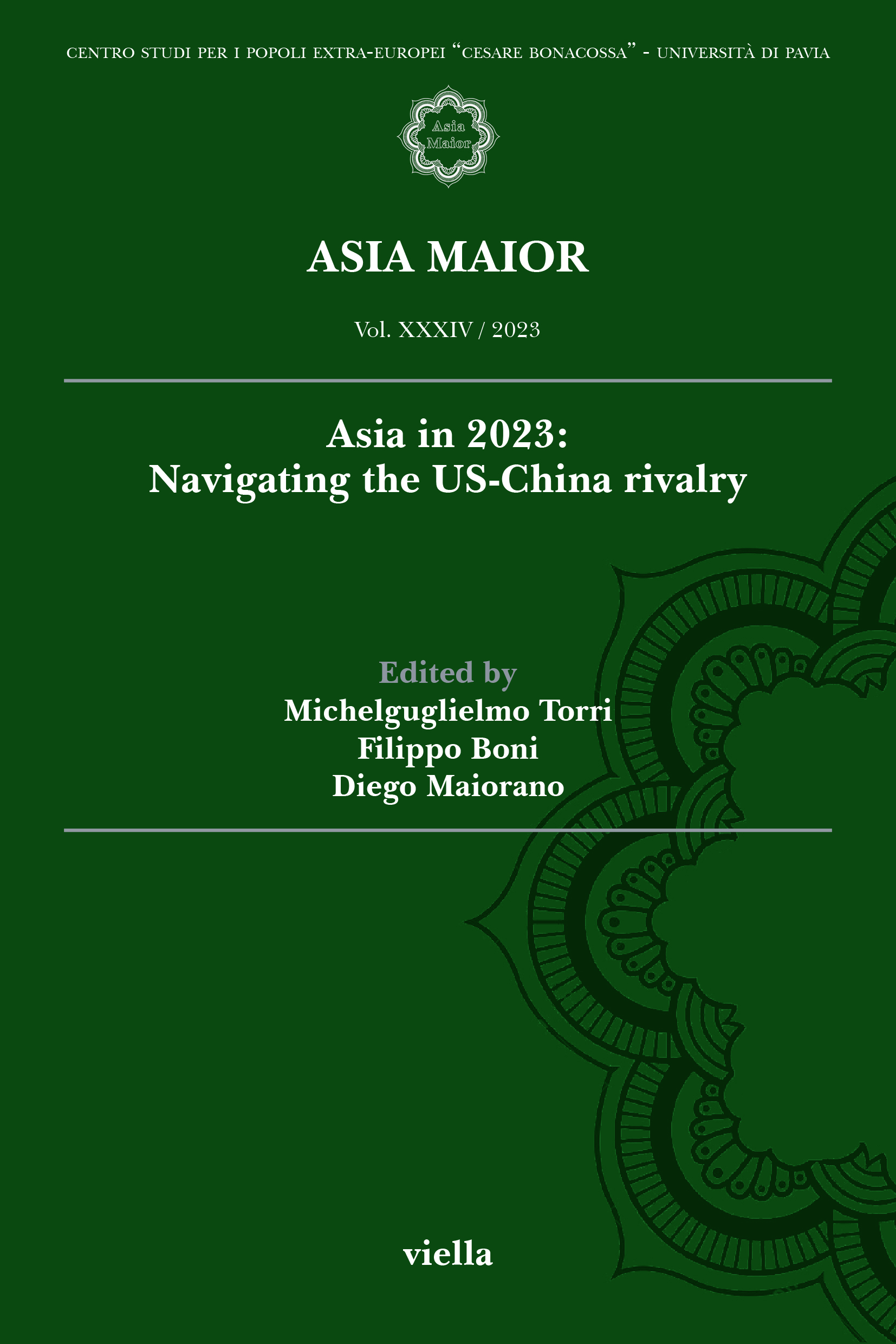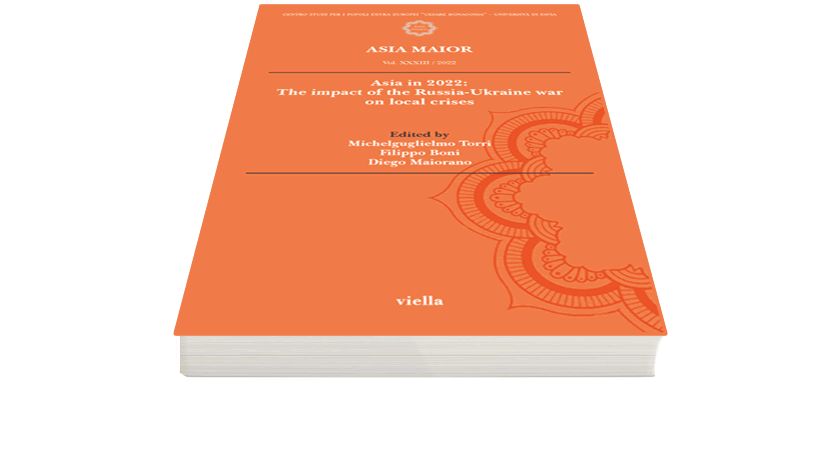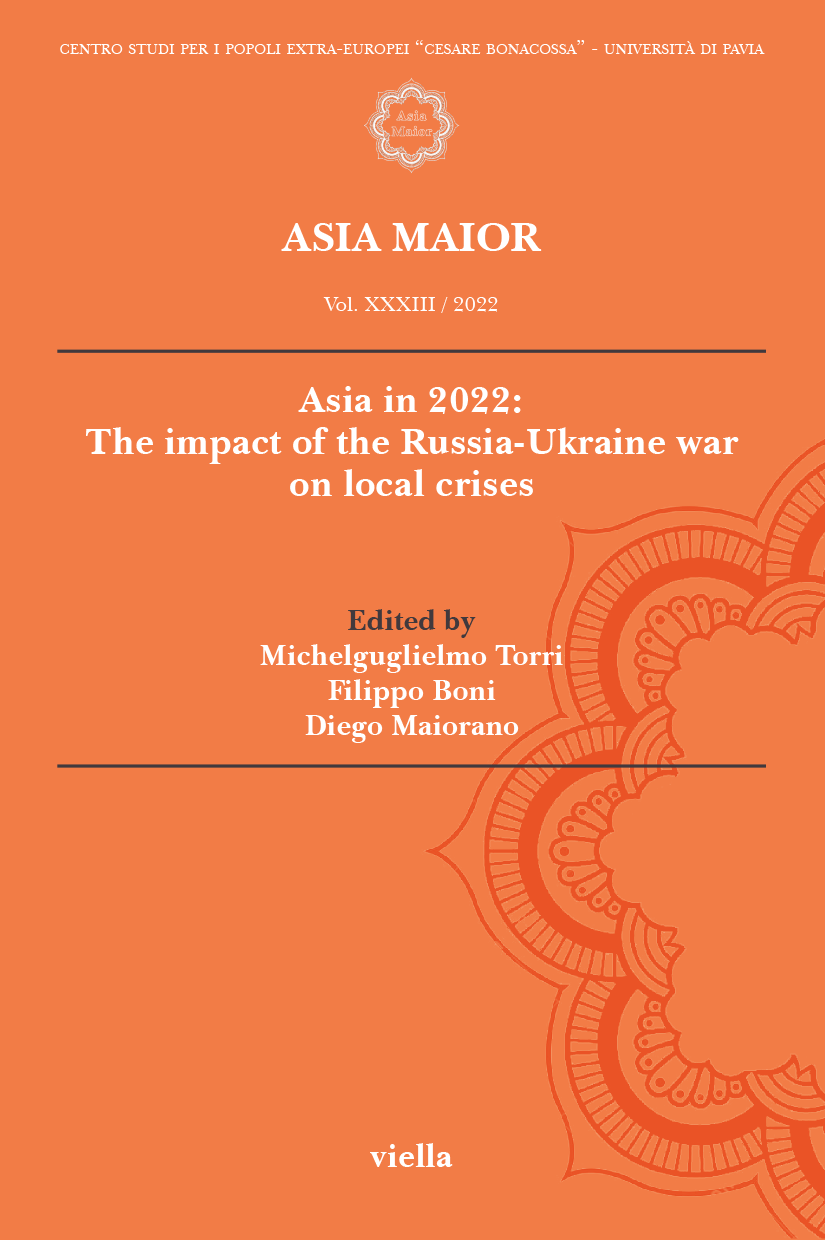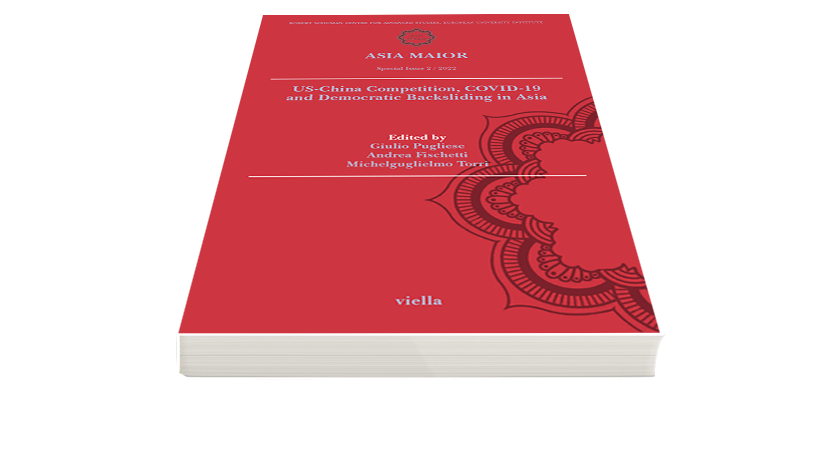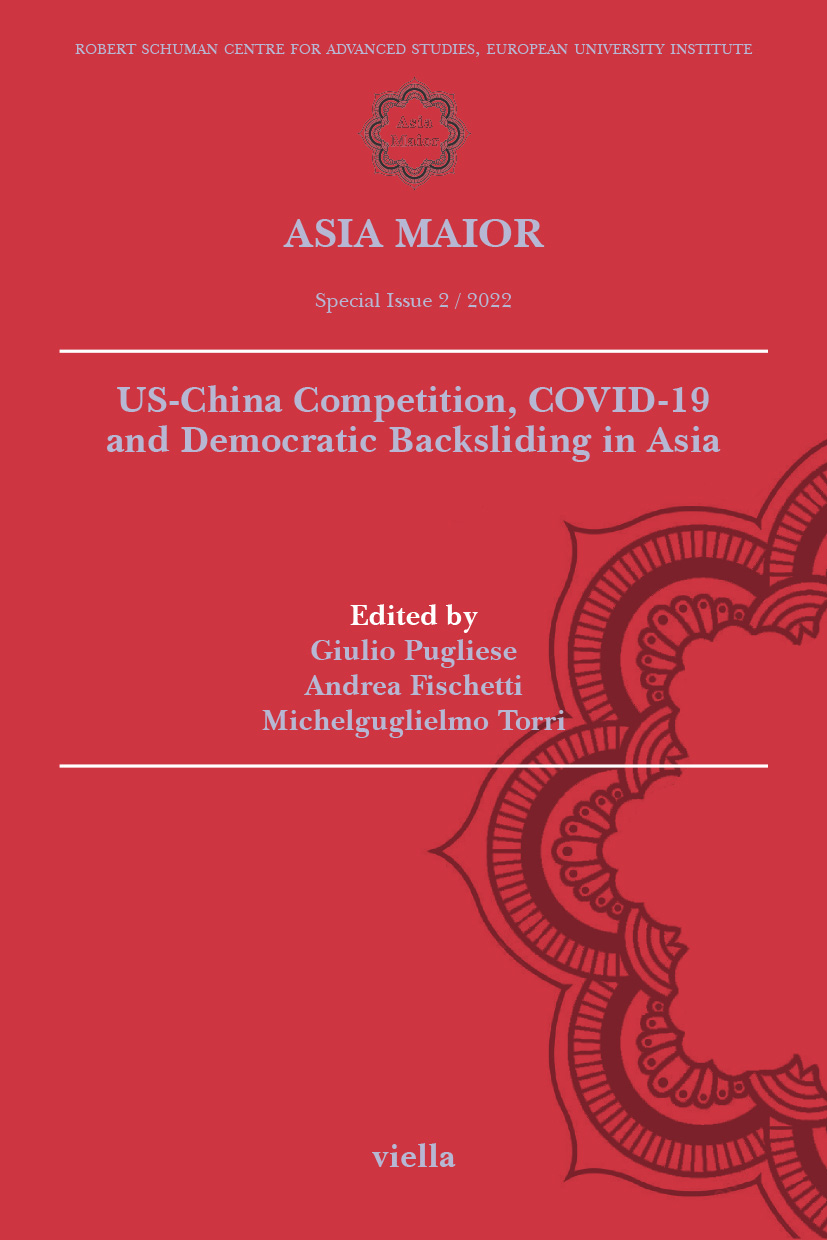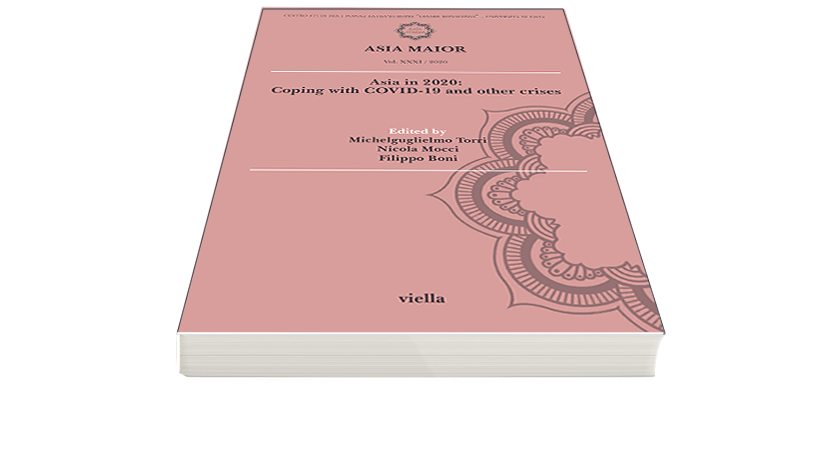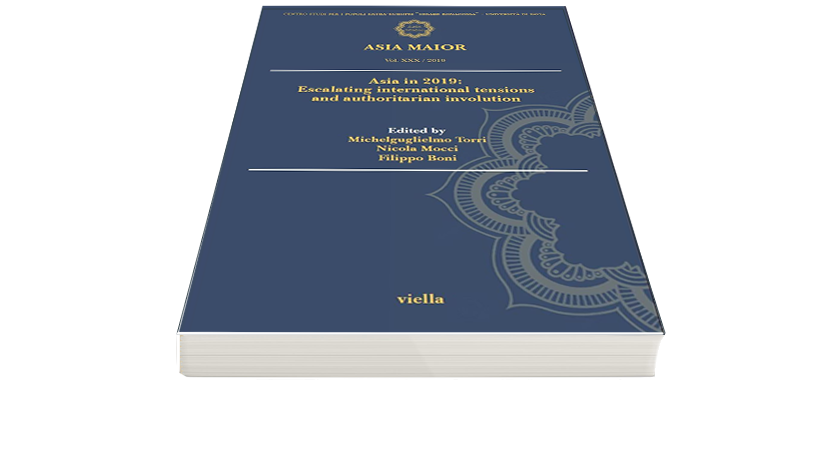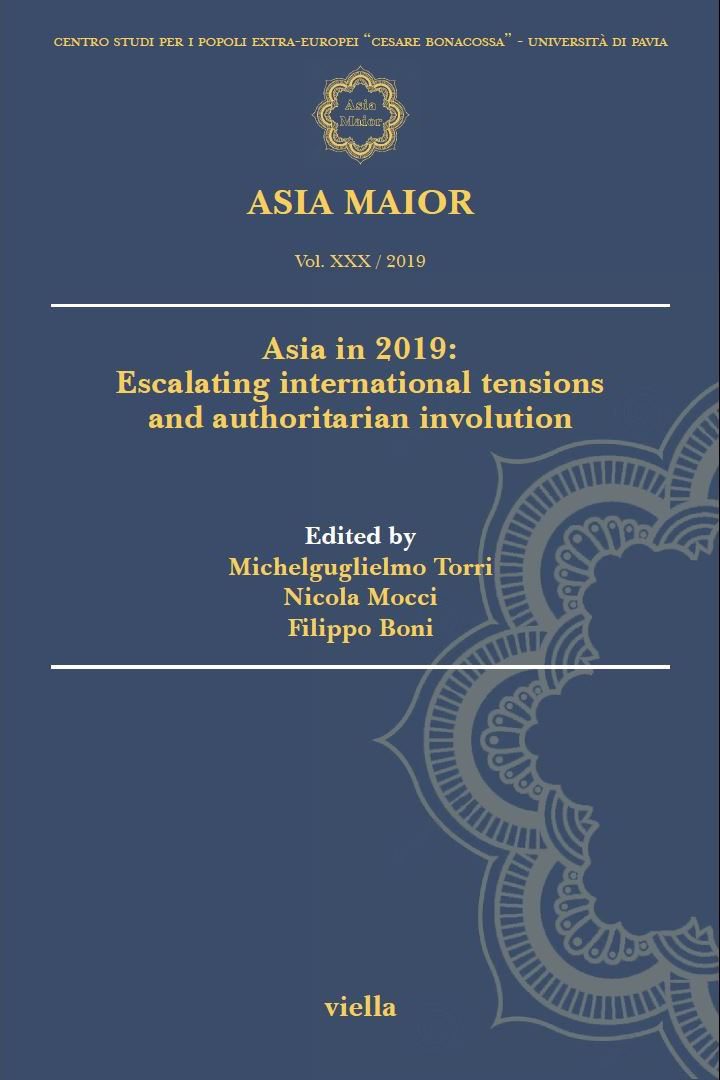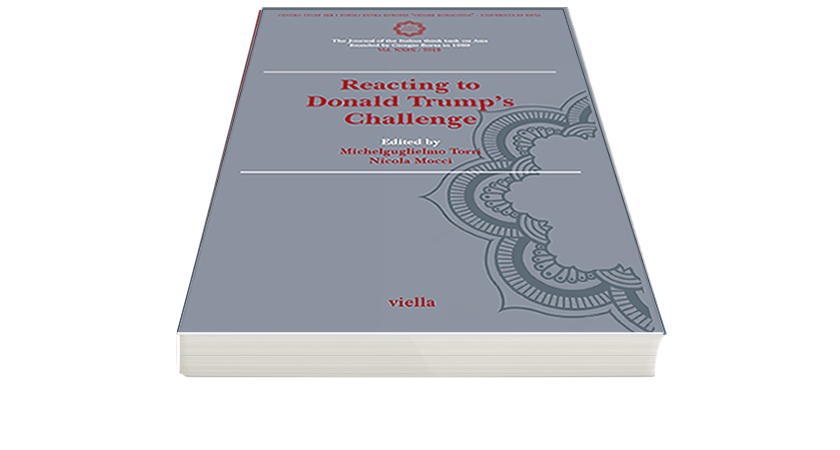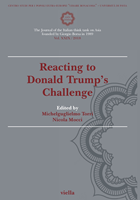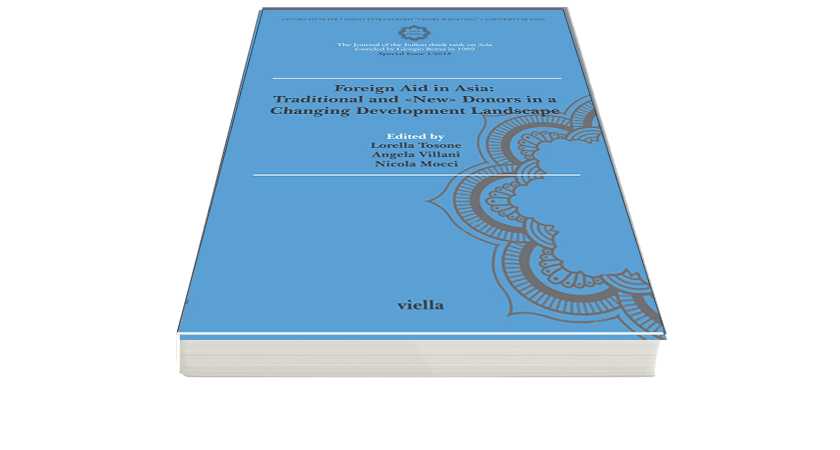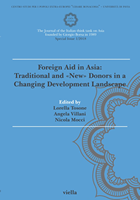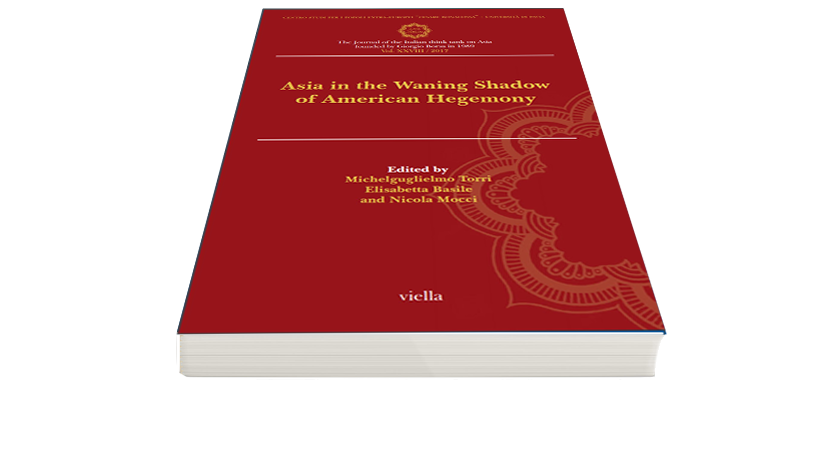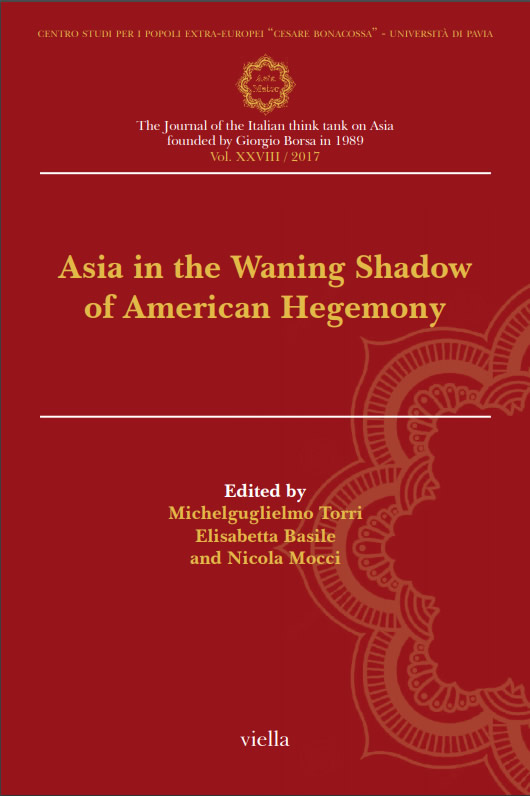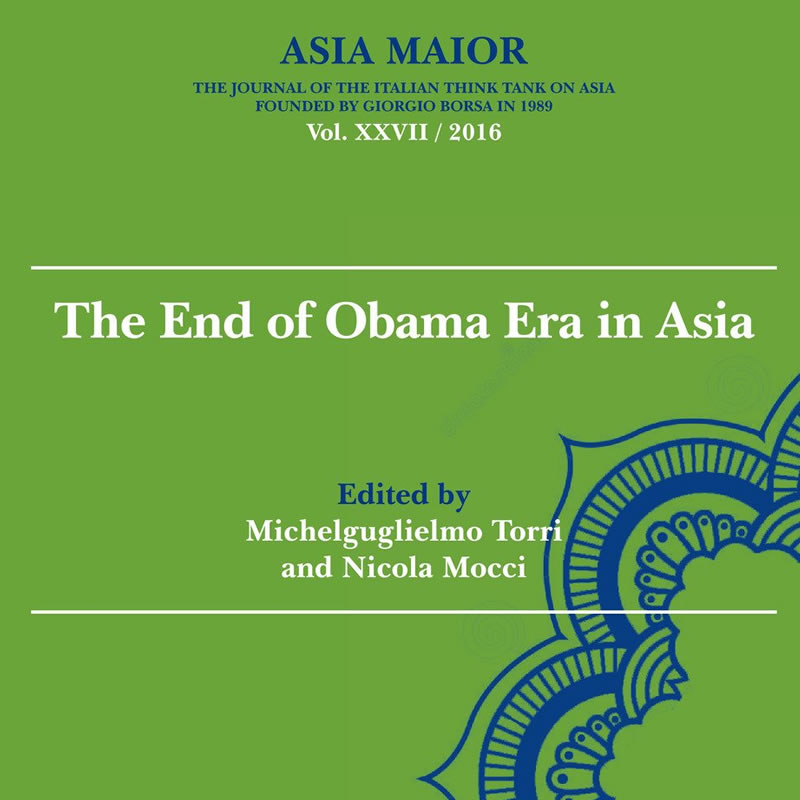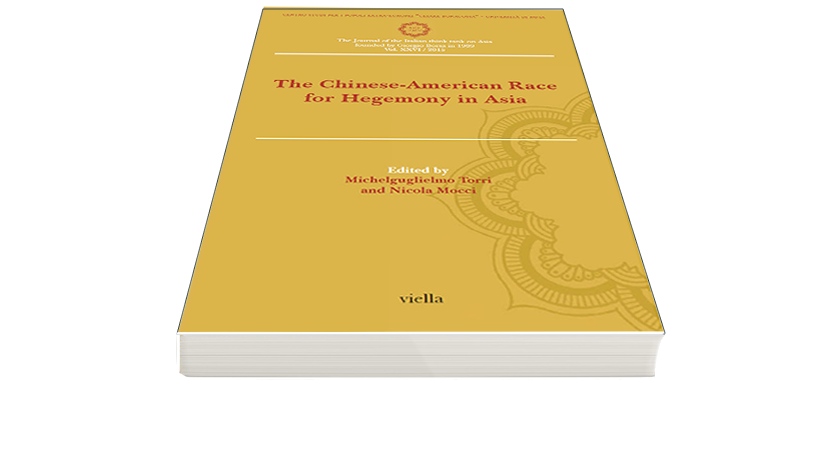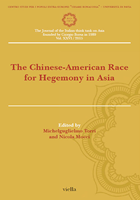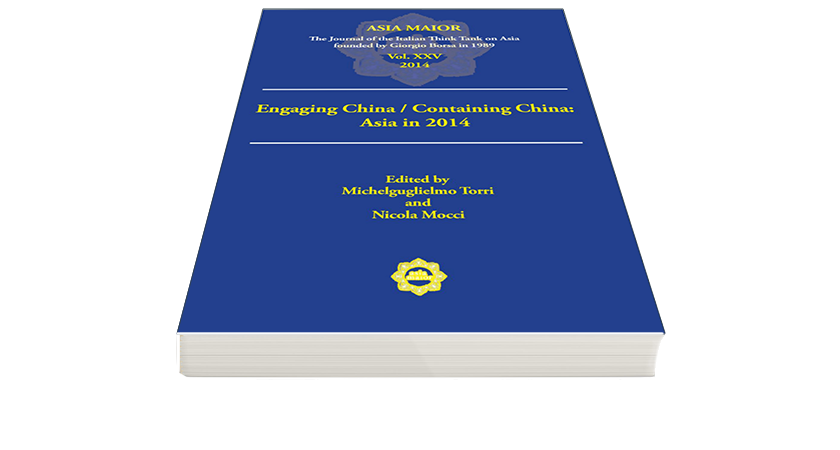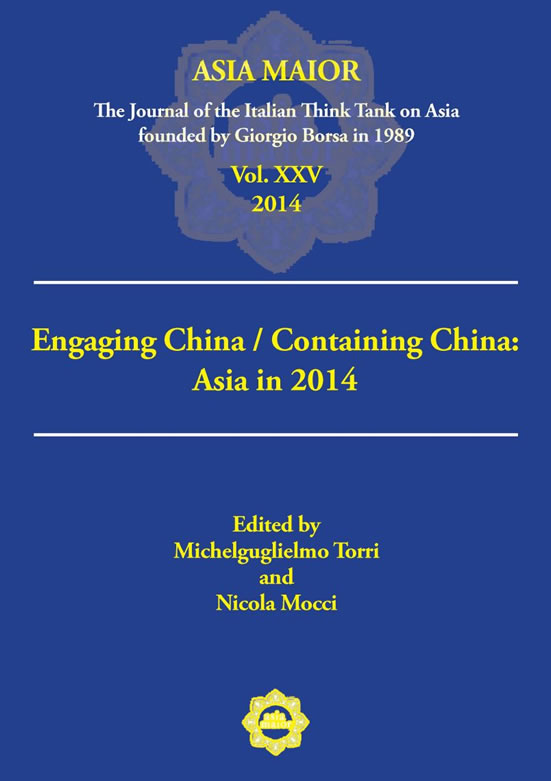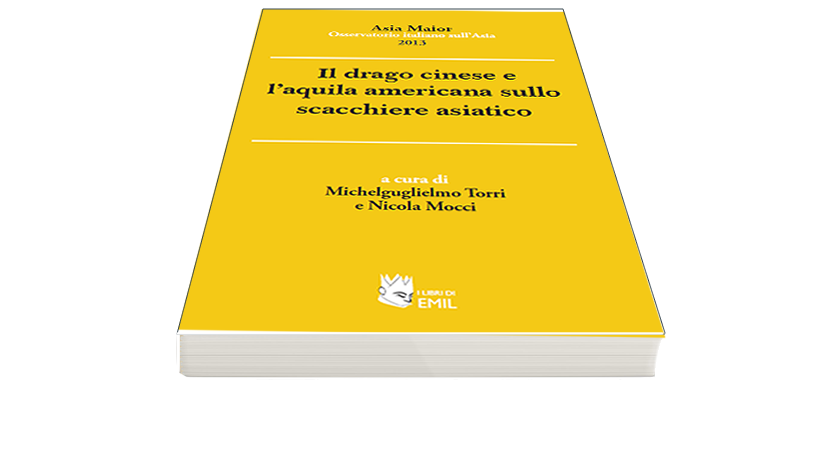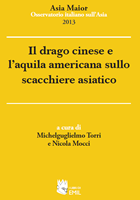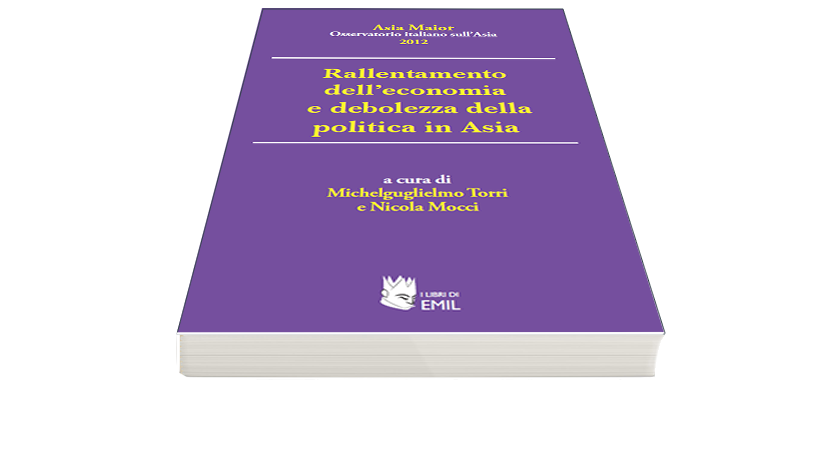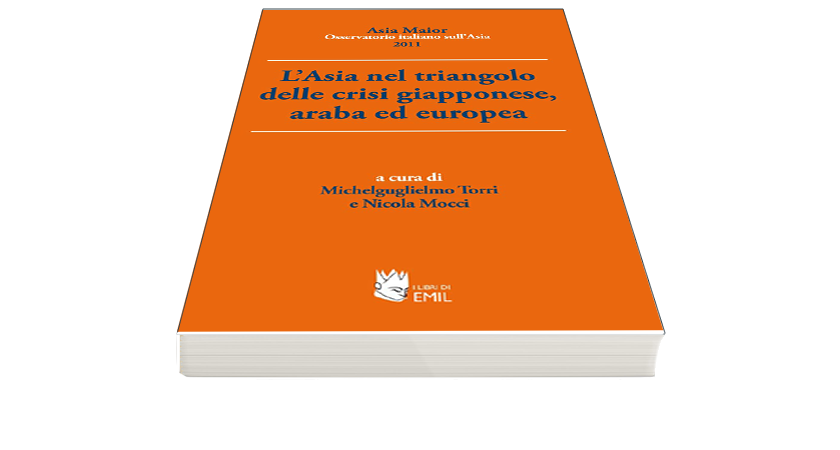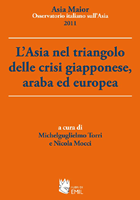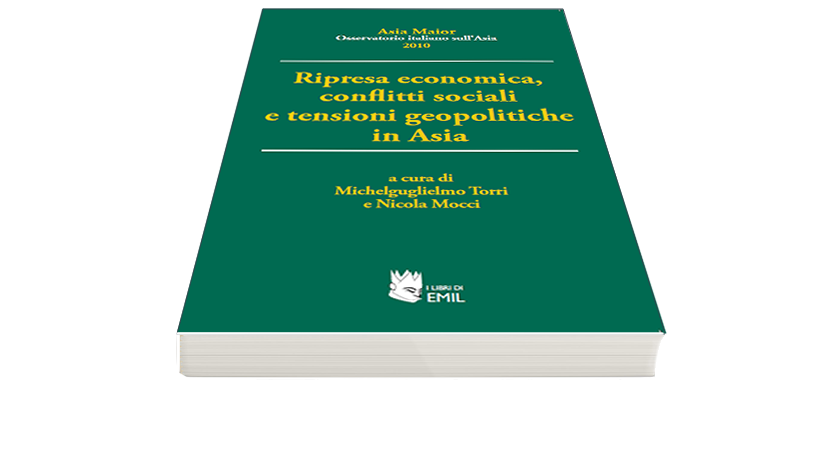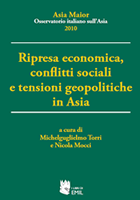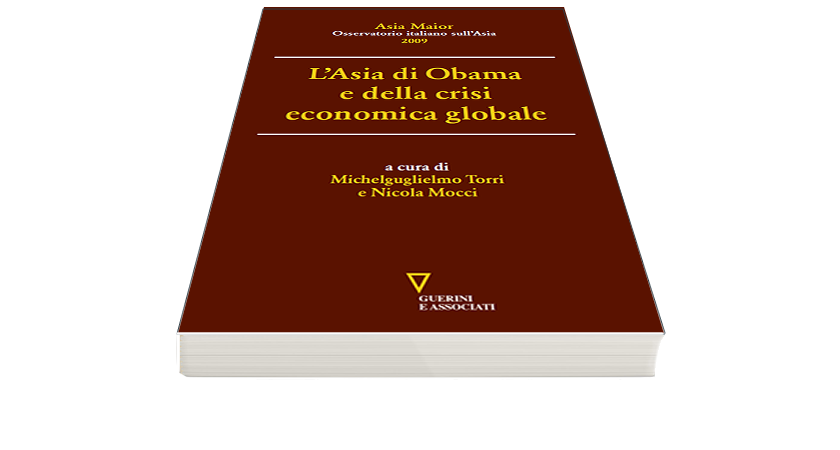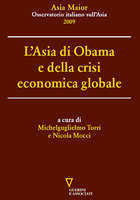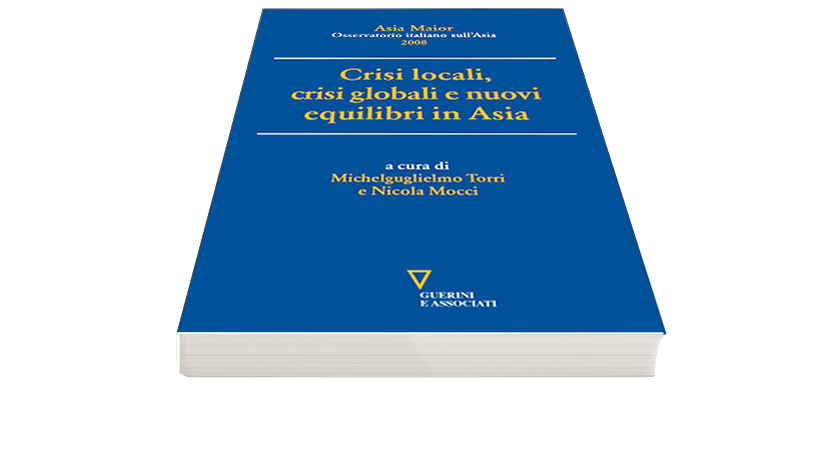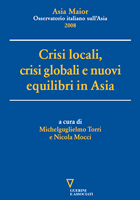China’s Foreign Policy 2024: Strategic assertiveness and diplomatic adaptation
Available also in pdf – Download Pdf
This article examines the evolution of China’s foreign policy in 2024, highlighting a shift toward a more calculated and assertive approach, reflecting a refinement in Beijing’s strategic direction. Building upon developments in recent years, during which China emphasized a proactive role in global security governance while cultivating its image as a responsible international actor, 2024 witnessed an evolution toward a more assertive posture. This transition included a recalibration of its diplomatic approach, marked by a departure from sharply polemical tones in favour of a more measured and strategically calculated posture aimed at defending national sovereignty, security, and development interests while expanding its influence in global affairs. This recalibrated approach was evident across key geopolitical theatres, including the Taiwan Strait, the South China Sea, and the Middle East. In the Taiwan Strait, Beijing focused on normalizing coercive practices through intensified military activities and sustained diplomatic pressure, eroding Taiwan’s autonomy while institutionalizing new operational norms. In the South China Sea, China’s coercive actions against Philippine naval and aerial assets reshaped regional security dynamics, reflecting a strategic push to consolidate its dominance and recalibrate the balance of power. In the Middle East, China’s expanding economic footprint and deepening partnerships with Gulf states have enhanced its influence over regional dynamics. However, the Gaza crisis underscored the challenges Beijing faces in balancing its growing role with the need to maintain constructive relations in a polarized environment. Meanwhile, escalating U.S.-China competition in technology, trade, and global influence further highlighted their rivalry, with Beijing leveraging economic resilience and strengthened ties with the Global South to counterbalance U.S. dominance. These developments collectively underscore China’s recalibrated foreign policy, blending strategic assertiveness with refined diplomacy to navigate an increasingly fragmented global order.
Keywords – Chinese Foreign Policy; China-US competition; Taiwan; South China Sea, Philippines.
1. Introduction
China’s foreign policy in 2024 continued its trajectory under Xi Jinping’s leadership, focusing on consolidating global influence through strategic competition and selective engagement. Beijing’s interactions with the United States provide a critical framework for understanding its external strategy, reflecting both structural tensions in great power competition and the strategic imperatives shaping its actions on the global stage. This dynamic is particularly evident in key geopolitical theatres, including Taiwan, the South China Sea, and crises such as those in Gaza. China has recently emphasized the critical importance of «responsibly managing» U.S.-China competition to maintaining global stability. As a matter of fact, during the meeting with President Joe Biden in Lima [17 November 2024], Xi Jinping stressed the importance of not challenging red lines and treating each other as equals; notably, he asserted that the so-called «Thucydides’s Trap» does not represent an inescapable historical determinism and that containing China is an unwise move doomed to fail [RMW 2024a]. This narrative marks an evolution in bilateral relations, introducing a distinct ideological dimension.
At the same time, U.S.-China relations in 2024 were marked by escalating trade restrictions. The Biden administration’s enforcement of semiconductor export controls and investment limitations, justified as safeguarding national security, were perceived by Beijing as containment strategies. This perception was further exacerbated by developments at the level of Western-led international organizations; in the 2024 Washington Summit Declaration, NATO leaders labelled China a «decisive enabler» of Russia’s war against Ukraine, expressing «deep concern» over the strengthening of Sino-Russian ties and the PRC’s ongoing attempts to reshape the rules-based international order through coercive policies. This unprecedented statement signalled a growing convergence among Allies — driven above all by the United States — towards viewing Beijing not only as a systemic rival, but as a direct strategic challenge within the Euro-Atlantic security framework [Cottey 2025]. The year then ended in uncertainty, both in Beijing and elsewhere, following Donald Trump’s election to a second presidential term — an uncertainty further intensified by his inaugural address on January 20, 2025, in which he referred to the Panama Canal and signalled his administration’s intent to reassert American control over it, in terms that suggested an unorthodox diplomatic posture likely to require a dedicated and carefully calibrated response.
China’s retaliatory measures reinforced the competitive undercurrent of their bilateral interactions, emphasizing the persistent duality of rivalry and selective engagement in their relationship. Beyond its competition with the United States, Beijing has sought to assert its influence in the South China Sea and expand its role in global governance. Key initiatives included strengthening ties with the Global South and advancing multipolar frameworks like BRICS+ and the Shanghai Cooperation Organization (SCO). This article aims to provide an understanding of China’s 2024 foreign policy trajectory, highlighting efforts to navigate tensions with established powers while advancing ties with the Global South. Building upon the trajectory observed in 2023 [Sciorati 2024, p. 34], when China’s foreign policy underscored its commitment to assuming a more proactive role in global security governance while preserving its carefully cultivated image as a responsible international actor, 2024 witnessed a further evolution toward an increasingly assertive posture. Although Beijing adopted a rhetorically more measured approach, its actions on critical issues such as Taiwan and the South China Sea demonstrated a sustained and deliberate effort to advance its strategic agenda.
The National People’s Congress (NPC – Zhonghua renmin gongheguo quanguorenmin dahui中华人民共和国全国人民大会) and China’s Political People’s Consultative Conference (CPPCC – Zhongguo renmin zhengzhi xieshang huiyi 中国人民政治协商会议) annual plenary meetings — also called the «Two Sessions», held in early 2024, and the Central Foreign Affairs Work Conference (CFAWC – Zhongyang waishi gongzuo huiyi 中央外事工作会议), in December 2023, were pivotal in articulating key conceptual frameworks that defined China’s foreign policy and defence agenda for the coming years. Although China’s overarching foreign policy goals have remained relatively static over time [Duggan 2024, 10 October], the year 2024 marked a notable evolution in its methods of implementation. This gradual shift, characterized by refined strategies, can be examined through the lens of the strategic documents and programmatic decisions mentioned above. This article will analyse numerous Chinese sources to account for the public discourse on foreign policy topics and to understand variations in the programmatic speeches of the Chinese leadership.
Diplomacy will be analysed as a central element of China’s foreign projection, an aspect often underestimated. Chinese assertiveness has increasingly come to be represented by Chinese diplomats and the Ministry of Foreign Affairs (MFA – Waijiao bu 外交部), as highlighted by Dylan M.H. Loh [2024]. This gradual reconfiguration has placed Xi and key Politburo members at the core of foreign policymaking, ensuring strategies align closely with his vision for China’s global role. In this context MFA’s representational role – acting and speaking on behalf of the state and Party while expressing its interests, values, and ideologies – has gained increasing significance [Mingze et at. ٢٠٢٣]. In ٢٠١٨, Xi declared that China’s diplomacy «represents the will of the state», encapsulating a broader process of centralisation that had already been underway for years [Xinhua, ٢٠١٨]. This highlights the growing importance of MFA’s diplomatic practices and its alignment with the centralized foreign policy objectives under Xi Jinping, clearly reflecting the ongoing process of centralizing foreign policy decision-making to grant the CCP greater control [Onnis ٢٠٢٣, p.١٧٧].
The first section, titled «Strategic Guidelines for Party-Led Foreign Policy» examines the programmatic directives articulated during the Central Foreign Affairs Work Conference held in late December 2023 and the outcomes related to foreign policy of the Two Sessions meetings in March 2024. Both events have become critical moments for the strategic planning of Chinese foreign policy, reflecting the increasing involvement of party-led institutions in shaping its direction. The Central Foreign Affairs Work Conference, convened for the sixth time since its inception in 1971, has gained prominence as a platform for defining China’s foreign policy. Notably, three of these meetings have been held under Xi Jinping’s leadership, in 2014, 2018, and 2023. Similarly, the Two Sessions meetings provide an opportunity to solidify strategic objectives. These events underscore how party-led institutions have assumed a central role not only in implementing foreign policy decisions but also in shaping their strategic direction. Agencies directly managed by the CPC Central Committee, such as the International Liaison Department of the CPC and the Central Foreign Affairs Commission, are increasingly influential in setting the tone and terms of China–US relations. Rather than merely executing decisions, these bodies are actively guiding the highest-level policymaking processes in Beijing, reflecting the Party’s growing dominance in foreign policy formulation [Jie 2024, 25 July]. The second section, titled ‘Economic and Strategic Rivalry in U.S.-China Relations in 2024’, delves into Chinese foreign policy with a particular focus on its relations with the United States. It explores the intensifying competition between the two powers, particularly in areas such as economic security, military capabilities, and global influence. This section highlights the increasingly confrontational nature of the U.S.-China relationship, emphasizing how the dynamics of rivalry are reshaping regional and global strategies. The third section, titled «Regional Flashpoints in 2024: China’s Strategic Calculations», focuses on pivotal regional tensions, particularly the South China Sea and the Taiwan Strait, and examines how these two areas are becoming increasingly interconnected within Chinese public discourse. It aims to explore how these regional challenges are deeply entwined with broader issues of sovereignty and geopolitical strategy, underscoring their critical importance within China’s foreign policy framework.
2. Strategic guidelines for Party-led foreign policy.
2.1. The 2023 Central Foreign Affairs Work Conference.
The Central Foreign Affairs Work Conference represents one of the rare instances where Xi Jinping directly addresses foreign policy for a domestic audience, alongside Politburo Collective Study Sessions focused on international issues. This contrasts with his communications at multilateral forums like BRICS or G20 summits, which are primarily directed toward external audiences. Held on December 27-28, 2023, for the third time during Xi’s tenure following sessions in 2014 and 2018, the CFAWC highlighted a clear shift toward a more assertive global posture and confirmed the trend observed in the previous meetings: the concentration of power in the hands of the Chinese president [Onnis 2020, p. 46]. While in previous sessions the new power dynamics had sparked some tensions [Congiu 2019], the 2023 meeting marked a definitive shift, with centralization firmly consolidating control over institutions and diminishing the influence of alternative party factions. Xi articulated a vision of an international order aligned with China’s strategic objectives, emphasizing the conference’s critical role in shaping an increasingly proactive foreign policy agenda. Historically, the Central Work Conference has marked pivotal moments in Beijing’s diplomatic strategy. Under Hu Jintao, the 2006 iteration focused on consolidating state oversight and maintaining an economic orientation that prioritized domestic stability and development over global ambitions. This state-centred approach, which can be described as national rather than central, diverged sharply from Xi Jinping’s strategy, which began with the 2014 conference. That year, Xi pointed out «China must exhibit a major-country diplomacy with its own characteristics» (Zhongguo bixu you ziji tese de daguo waijiao 中国必须有自己特色的大国外交) [XHW 2014], marking a decisive departure from Deng Xiaoping’s «hide-and-bide» strategy, focusing on national security, sovereignty, and regional influence. By 2018, amidst global disruptions like Brexit and the Trump administration, the conference identified these geopolitical shifts as opportunities for China to expand its global influence.
The 2023 conference built upon these foundations, emphasizing three core dimensions. First, Xi provided a confident evaluation of China’s diplomatic successes over the past decade, juxtaposing them against challenges such as strained relations with the West, the COVID-19 pandemic, and contentious diplomacy. This perspective reflects Beijing’s self-perception as resilient and capable of sustaining assertive diplomacy without reverting to reactive strategies. Second, the conference addressed the evolving international environment, characterized as a «new period of turbulence and transformation» (Xin de dongdang biange qi新的动荡变革期) [WJB 2023]. In response, Xi urged cadres to maintain China’s long-term global objectives while adapting to emerging complexities. Third, the conference laid out specific guidelines to counter U.S. influence by strengthening alliances with the Global South. This strategy aligns China with developing nations on issues like climate change, trade, and regional conflicts, including Palestine and Gaza. Importantly, Chinese Foreign Minister Wang Yi reiterated, in December 2024, the importance of «always holding the high ground of international morality and justice» (Shizhong zhanju guoji daoyi de zhigaodian 始终占据国际道义的制高点) [WJB 2024]; this is in continuity with bolstering China’s appeal and, therefore, functional the principle of a «Community of Shared Future for Mankind» (Renlei mingyun gongtongti 人类命运共同体), envisioning an international order rooted in Chinese values.
The concept of a «Community of Shared Future for Mankind» remains central to Xi’s diplomatic vision, advocating an international system aligned with Chinese Communist Party values. Rather than directly exporting ideology, this approach seeks influence through initiatives such as the Belt and Road Initiative (BRI – Yi dai Yi lu 一带一路), which has been recalibrated to prioritize smaller, sustainable projects1. Complementary frameworks like the Global Development Initiative (GDI – Quanqiu fazhan changyi 全球发展倡议) and the Global Security Initiative (GSI – Quanqiu anquan changyi 全球安全倡议)2 further underscore China’s effort to create alternative cooperation models that resonate with developing nations. A thematic evolution in the 2023 conference was the strategic pivot away from the confrontational tone of «wolf warrior» (Lang zhan 狼站) diplomacy, marking a transition toward a more calculated yet assertive diplomatic approach; on the contrary, it is judged necessary to «constantly strengthen the scientific nature, the foresight, proactiveness and creativity of the foreign affairs work» (Buduan zengqiang duiwai gongzuo de kexuexing, yujianxing, zhudongxing, chuangzaoxing 不断增强对外工作的科学性、预见性、主动性、创造性) [WJB 2023]. This shift aligns with Xi Jinping’s call for diplomats to «dare to struggle» [Thomas 2024, 12 April] while resolutely defending national sovereignty, security, and development interests, signalling a sustained effort to expand Beijing’s influence in global affairs. While retaining assertiveness, the conference advocated a calibrated approach aimed at shaping global narratives and strengthening ties with the Global South. This strategy involves fostering divisions within Western alliances on contentious issues and building coalitions through multilateral platforms such as the UN, BRICS, and the SCO. Moreover, in January 2025 Foreign Minister Wang Yi reinforced Xi Jinping’s pivotal role in defining China’s foreign policy trajectory. He emphasized «major country diplomacy with Chinese characteristics» (Zhongguo tese daguo waijiao中国特色大国外交) [Wang Yi 2025], which navigates global complexities through a multipolar framework. Wang underscored the importance of partnerships with the Global South to counter restrictive economic practices and foster inclusive globalization. Flagship initiatives like the BRI, GDI, and GSI are central to China’s strategy to cultivate a favourable international environment aligned with its strategic priorities. Such objectives highlight China’s attempt to align its global aspirations with the complexities of navigating an increasingly fragmented international order. [Thomas 2024, 12 April].
2.2. The two sessions: policy directions and diplomatic priorities.
During the Two Sessions, Chinese leadership emphasized resilience and strategic focus to navigate an increasingly volatile international environment. Premier Li Qiang presented the 2024 Government Work Report, and Foreign Minister Wang Yi addressed foreign policy questions in a news conference. Together, these events offered a comprehensive perspective on the trajectory of China’s foreign policy for near future, emphasizing the balance between continuity and stability in diplomatic principles while adapting to the complexities of an evolving global landscape. The 2024 Government Work Report (Zhengfu gongzuo baogao 政府工作报告), identified challenges posed by an «unusually complex international environment» (Yichang fuza de guoji huanjing异常复杂的国际环境), reflecting the adverse effects on China’s developmental trajectory [RMW 2024b]. Drawing on themes from the Central Foreign Affairs Work Conference, it recognized global transformations reshaping immediate and historical dynamics. While acknowledging difficulties, it stressed stability in overarching trends, including human development progress and global interconnectedness, presenting these challenges not merely as constraints but also as opportunities to align domestic progress with international strategies. In foreign policy, Premier Li reaffirmed China’s commitment to «adhere to the path of peaceful development» (Jianchi zou heping fazhan daolu坚持走和平发展道路) [RMW 2024b] strategic autonomy, and mutually beneficial collaboration. Central to this vision is the construction of the aforementioned «Community of Shared Future for Mankind», integrating diplomatic initiatives with domestic modernization. This approach underscores the continuity of China’s diplomatic principles, reaffirming its role as a contributor to global peace and a defender of the international order. The Government Work Report also emphasized innovative dimensions in foreign policy, aligning with propositions from the Central Foreign Affairs Work Conference. It prioritized fostering an «equal and orderly multipolar world» and promoting «inclusive and universally beneficial economic globalization» [Zhu 2024, 25 March]. Additionally, progress in implementing GDI, GSI and Global Civilization Initiative (GCI – Quanqiu wenming changyi 全球闻名倡议)3 was highlighted, reflecting their incorporation into bilateral and multilateral frameworks. These initiatives underscore China’s aim to offer alternative governance models that resonate with developing nations and enhance its role in shaping global norms.
On the domestic front, military modernization emerged as a key focus. Premier Li emphasized achievements aligned with Xi Jinping’s strategic vision for the People’s Liberation Army (PLA). Xi, addressing PLA representatives, stressed that «strategic capabilities in emerging domains are major components of the national strategic system and capabilities» (Xinxing lingyu zhanlüe nengli shi guojia tixi he zhongyao zucheng bufen新兴领域战略能力是国家战略体系和能力重要组成部分) and innovative approaches to new challenges [RMW 2024c]. *This aligns with broader efforts to accelerate technological innovation, particularly amid external constraints such as U.S. restrictions on high-tech exports. These developments hold evident significance for China’s foreign policy projection, emphasizing the urgency of advancing domestic defence capabilities while reinforcing its global standing. The report also commemorated the 75th anniversary of the founding of the People’s Republic of China, emphasizing its historical significance and reaffirming commitments to modernization and global engagement. Strategic priorities such as BRI cooperation, fostering international partnerships, and contributing to global peace and development illustrate China’s intention to integrate its domestic modernization agenda with broader diplomatic aspirations. Additionally, the report announced a 7.2% increase in the 2024 defence budget, reflecting growing demands for military modernization. This is consistent with the developmental map to which the PLA strengthening process is bound. More specifically, the nearest armed forces modernization objective is set for the year 2027, which coincides with what is defined as the «Centenary Goal of the People’s Liberation Army» (Jianjun yibainian fendou mubiao建军一百年奋斗目标). This measured increase emphasizes China’s focus on safeguarding national sovereignty while aligning defence goals with broader foreign policy initiatives. By doing so, Beijing aims to present itself as a stabilizing force in global affairs. As highlighted during the Two Sessions, these diplomatic and defence initiatives reflect China’s effort to balance progress with stability. Premier Li’s reiteration of strategic autonomy, coupled with Foreign Minister Wang Yi’s focus on resilience in global governance, demonstrates the leadership’s nuanced approach to foreign policy. These developments align with the broader ambition to advance China’s role in building an inclusive, multipolar world order while addressing the challenges of an increasingly complex international environment, reflecting Beijing’s ongoing efforts to reshape global governance structures4 in line with its strategic interests and ideological framework [Johnston 2019].
3. Economic and strategic rivalry in U.S.-China relations in 2024.
In 2024, U.S.-China relations unfolded as a dynamic interplay of escalating tensions and cautious engagement. The year began under the auspices of the November 2023 San Francisco summit, where President Xi and President Biden signalled a willingness to stabilize relations through cooperation in selected areas such as climate action and counter-narcotics [‘China’s cooperation on fentanyl’ 2024, 17 July]. The latter, a particularly pressing issue for U.S. public opinion, highlighted concerns over China’s role as the primary source of fentanyl5 and its precursor chemicals trafficked into the United States. Despite this promising start, efforts to stabilize bilateral ties were persistently undermined by escalating tensions, particularly in areas such as trade, technological competition, and regional security. These dynamics underscored the duality of cooperation and conflict shaping this critical relationship.
A defining feature of U.S.-China relations in 2024 was the near-constant imposition of sanctions and trade restrictions on companies from both nations. These measures, often tied to concerns over national security and technological superiority, extended far beyond strictly strategic sectors [‘US-China Relations in the Biden Era’ 2024, 9 December]. For example, the United States expanded its export controls on advanced semiconductors and related technologies, adding 140 entities to its Entity List6 in December [Allen 2024, 11 December]. Beijing responded with retaliatory export controls on key materials such as gallium, germanium, and antimony, crucial for semiconductor production and other high-tech industries [SWB 2024]. These reciprocal measures reflected the intensifying economic and technological rivalry between the two powers. The notion of the U.S. adopting a «hardening China policy» is increasingly perceived in Beijing as a strategy to contain China’s rise. This sentiment resonates with influential academic and strategic discourses, which frame U.S. actions – such as export controls, alliance-building in the Indo-Pacific, and economic decoupling – as a concerted effort to counter China’s growing global influence. These topics had already been stressed by Xi Jinping during the 2023 Two Sessions [Ng 2023, 7 March].
High-profile meetings throughout the year illustrated the complexities of this bilateral relationship. In January, senior U.S. and Chinese defence officials met for the 17th Defense Policy Coordination Talks, marking a cautious step toward restoring military-to-military communication after a prolonged suspension [GFB 2024a]. These discussions were part of broader efforts to prevent miscalculations and manage competition responsibly. However, such dialogues often highlighted more than resolved the persistent gaps in mutual trust. In February, a high-level economic dialogue hosting some of China’s top entrepreneurs was held in Beijing, addressing pressing trade imbalances and the enforcement of intellectual property rights [South China Morning Post 2025, 14 February]. This meeting underscored mutual recognition of the economic stakes involved, yet it failed to produce significant breakthroughs, particularly as the U.S. maintained its stance on tariffs imposed during the Trump administration.
Chinese strategic discourse reveals diverse perspectives on the evolving U.S.-China dynamic. The perception of being «under siege» [Jie 2024, 25 July] reinforces triumphalist and moderately optimistic perspectives in Chinese policy circles, shaping Beijing’s strategies toward asserting its global ascendancy. These perspectives interpret the U.S.’s «hardening China policy» – manifested through measures such as export controls, Indo-Pacific alliances, and economic decoupling – as deliberate strategies of containment. This perception was pivotal in defining concepts such as the so called «holistic approach to national security»7 (Zongti guojia anquan guan总体国家安全观).
The Taiwan question remained a central flashpoint throughout the year. Chinese officials repeatedly framed U.S. support for Taiwan as a direct challenge to Beijing’s sovereignty, prompting more assertive deterrent measures such as multiple training exercises conducted by the PLA around the main island [GFB 2024b]. The continuation of U.S. arms sales to Taipei, combined with Taiwan’s more inclined to independence administration, further strained relations. Meanwhile, Washington maintained its commitments under the Taiwan Relations Act, framing its support for the island as consistent with its broader strategy of ensuring a «free and open Indo-Pacific». These regional flashpoints, including Taiwan and the South China Sea, will be analysed in detail in the next section. Efforts to maintain dialogue continued amid these tensions. In April, a phone call between President Xi and President Biden sought to build on the progress made during their San Francisco meeting [RMW 2024d]. Discussions included counter-narcotics cooperation, military-to-military communication, and climate change-areas identified as potential avenues for cooperation. Yet even these dialogues were often overshadowed by concurrent actions exacerbating tensions, such as the US Department of Commerce’s expanded export controls and China’s countermeasures against American defence firms involved in arms sales to Taiwan. The Shangri-La Dialogue in June provided another opportunity for high-level engagement, with U.S. Secretary of Defense Lloyd Austin and Chinese Minister of National Defense Dong Jun meeting face-to-face [Yew 2024, 2 June]. While these discussions underscored the importance of dialogue, they also revealed significant limitations. As noted by observers, the two sides often «talk past each other», failing to address core concerns effectively [Kine 2024, 30 May]. U.S. officials emphasized the importance of «freedom of navigation» and «respect for international law» while Beijing reiterated its red lines on Taiwan and its position in the South China Sea [RMW 2024e]. The dialogue highlighted the challenges in aligning policy priorities, particularly concerning third-party actors in the Indo-Pacific region [Scobell 2024, 12 June]. In July, Treasury Secretary Janet Yellen visited Beijing to discuss macroeconomic stability and the implications of ongoing sanctions [The Straits Times 2024, 18 November]. The meetings aimed to mitigate financial risks associated with decoupling but ended with limited agreements, reflecting the entrenched nature of economic competition. By September, the Biden administration’s unveiling of the Indo-Pacific Economic Framework further underscored the U.S. strategy of countering China’s influence in the region [US Department of Commerce 2024, 23 September]. This move prompted Beijing to strengthen its ties with the Global South, leveraging initiatives like the BRI and advancing alternative trade agreements to diminish reliance on U.S.-led economic frameworks. In November, the APEC summit in Lima served as another platform for engagement. Despite formalities, the summit showcased deepening divides, particularly on issues like digital trade and data security. While both sides affirmed the need for cooperation on climate change and public health, these areas of agreement were overshadowed by broader geopolitical tensions [Pak 2024, 13 November]. As the year drew to a close, December saw a flurry of diplomatic activity, including an expanded meeting of the U.S.-China Comprehensive Economic Dialogue. This marked an effort to address systemic issues in trade and investment relations, though progress remained minimal amid mutual accusations of unfair practices and protectionism [Jia 2024, 8 December]. Simultaneously, the U.S. added new Chinese firms to its Entity List, while Beijing announced further restrictions on rare earth exports, underscoring the tit-for-tat nature of their economic policies [SWB 2024]. Throughout the year, these interactions reflected broader trends in U.S.-China relations: a reactive cycle of competition exacerbated by mutual distrust and conflicting strategic objectives. As both nations navigate this intricate and often contentious relationship, the balance between competition and cooperation will continue to shape the global order in the years to come.
4. Regional flashpoints in 2024: China’s strategic calculations.
4.1. Normalizing coercion: Beijing’s strategic recalibration in the Taiwan Strait.
The trajectory of cross-Strait relations in 2024 illustrated a year of heightened complexity and strategic recalibration, as Beijing continued its efforts to establish a new normal [Lin & Wuthnow 2022, 16 August] in the Taiwan Strait.8 This evolving paradigm was characterized by the intensification of military activities, sustained diplomatic pressures, and a concerted focus on normalizing coercive practices. As in previous years, military exercises by the People’s Liberation Army (PLA) and the Chinese Coast Guard (CCG) exhibited a steady increase in scale and sophistication, reflecting a deliberate strategy to operationalize territorial claims and project influence over the Strait. The year began with notable political developments. On January 1, Chinese President Xi Jinping reiterated in his New Year Address the necessity of Taiwan’s unification with China [Mahadzir 2024, 1 January], reaffirming Beijing’s uncompromising stance. Shortly thereafter, on January 13, William Lai Ching-te of the Democratic Progressive Party9 (DPP) was elected as Taiwan’s new president, marking an unprecedented third consecutive term for the DPP [Insisa 2024, pp. 147-153]. While this electoral success solidified the party’s dominance, the absence of a legislative majority presented new challenges for governance and political stability. Lai’s administration thus inherited a fragile domestic context, further exacerbated by external pressures from Beijing, which interpreted the election as a direct challenge to its «One-China principle» (Yige Zhongguo yuanze一个中国原则.) In apparent retaliation, Beijing persuaded Nauru to switch diplomatic recognition from Taiwan to China on January 14, marking the tenth diplomatic partner lost by Taiwan since the DPP assumed power in 2016. While Nauru had already changed sides in the past10, this latest shift—almost certainly arranged well in advance—stood out for its timing, signalling a renewed assertiveness in the diplomatic tug-of-war over Taiwan. This development highlighted Beijing’s continued reliance on «checkbook diplomacy»11 to isolate Taipei, reinforcing the perception of Taiwan’s diminishing formal international presence [Associated Press 2024, 24 January].
February witnessed a series of maritime incidents that further underscored the precarious state of cross-Strait relations. On 14 February, a Chinese fishing vessel capsized near Kinmen following a confrontation with Taiwanese authorities, resulting in the deaths of two fishermen. Beijing condemned the incident, framing Taiwan as the aggressor. Days later, on 19 February, Chinese Coast Guard vessels boarded a Taiwanese tourist boat near Kinmen, inspecting passengers’ documents and asserting jurisdiction over contested waters. These actions illustrated Beijing’s incremental strategy to erode Taiwan’s de facto sovereignty over its offshore territories while testing the limits of Taipei’s responses. March marked a pivotal shift in Beijing’s narrative. At the NPC, Premier Li, despite pointing out the necessity to promote peaceful cross-Strait development, reaffirmed the «One-China principle» and the imperative to counter «Taiwan independence» (Taidu 台独), omitting references to «peaceful unification» [RMW ٢٠٢٤b]. This shift was reinforced during the Chinese People’s Political Consultative Conference on 7 March, where Xi Jinping called for the mobilization of patriotic forces to advance unification. These developments, consistent with the framework articulated in the 20th Party Congress, reflected an erosion of space for dialogue with Taiwan’s citizens and institutions [Pelaggi 2022]. The increasingly assertive tone suggested that political rapprochement across the Strait had become increasingly unattainable, even with factions in Taiwan that had previously advocated for cooperative frameworks.
In April, Beijing escalated its military manoeuvres, with Taiwan’s Ministry of National Defence reporting over 30 PLA aircraft and nine naval vessels entering its airspace and surrounding waters [Chung 2025, 17 April]. These incursions exemplified Beijing’s efforts to institutionalize military presence around Taiwan, leveraging sustained operations to exert psychological and strategic pressure.
May represented a significant juncture in cross-Strait relations, coinciding with William Lai’s inauguration as president on May 20. In his inaugural address, Lai drew parallels between China’s military actions and Russia’s invasion of Ukraine, framing Beijing’s coercion as a threat to global peace and stability. Beijing’s response was swift, with the «Joint Sword-2024A» military exercises on 23-24 May showcasing unprecedented PLA-CCG coordination. These drills simulated scenarios required for a blockade, signalling Beijing’s intent to establish a routine of high-intensity military operations to assert dominance in the Strait [Hung 2024, 27 July].
The summer months were marked by a continued escalation of Beijing’s activities. On 2 July, the Chinese Coast Guard intercepted and detained a Taiwanese fishing vessel near Kinmen [VOA News 2024, 3 July]. By 11 July, Taiwan recorded 66 PLA aircraft incursions into its air defence identification zone (ADIZ) in a single day, setting a new record for 2024 [DW 2024, 11 July]. These events underscored Beijing’s strategy of normalizing incursions as part of a broader campaign to desensitize Taiwan and the international community to its military presence. The dynamics reached a critical inflection point in October, following President Lai’s National Day address on 10 October. Beijing responded with the «Joint Sword-2024B» exercises on 14 October, which, while shorter in duration, showcased a higher degree of operational intensity and coordination. These drills, featuring the deployment of advanced naval assets, including the aircraft carrier Liaoning, and record-breaking incursions by over 150 PLA aircraft, demonstrated Beijing’s reinforced capacity to enforce a blockade. The integration of CCG vessels in these operations further blurred the distinction between military and law enforcement activities, highlighting Beijing’s intent to normalize its assertive actions in the Strait [Lin & Hart 2024, 29 October].
December culminated in the most extensive maritime operations in decades. Between 9-11 December, nearly 90 Chinese naval and Coast Guard vessels conducted unannounced drills in waters surrounding Taiwan, extending from Japan’s southern islands to the South China Sea [Yang 2024, 10 December]. Taiwan’s Ministry of National Defence characterized these exercises as the largest since the 1996 Taiwan Strait Crisis, underscoring their unprecedented scale and geopolitical significance [Pierson & Chang Chien 2024, 10 December]. These drills represented a decisive escalation in Beijing’s strategy, explicitly demonstrating its capability to isolate Taiwan while deterring external intervention. The unannounced nature of the operations, coupled with their geographic reach and the deployment of advanced assets, including Type 055 destroyers and large amphibious assault ships, highlighted Beijing’s intent to simulate scenarios required for a full-scale blockade or even an amphibious assault. Observers noted that the inclusion of nearly 20 Coast Guard vessels blurred the line between military and paramilitary activities, reflecting a deliberate effort to normalize coercive practices and expand Beijing’s operational toolkit in the Taiwan Strait [Dotson 2025, 8 January]. The exercises served not only as a demonstration of military strength but also as a stark warning to Taipei and its international partners, reinforcing the strategic recalibration pursued by Beijing throughout the year.
The developments of 2024 illustrate Beijing’s deliberate recalibration of its strategies in the Taiwan Strait, characterized by a persistent effort to rewrite the operational norms governing cross-Strait interactions. By employing military intimidation, economic leverage, and diplomatic marginalization, China sought to normalize its assertive posture while incrementally eroding Taiwan’s capacity for resistance. However, this strategy was fraught with significant obstacles: the immense financial and military costs of a potential conflict, coupled with the risks of international backlash and regional destabilization, continued to act as strong deterrents. At the same time, the evolving dynamics in the Taiwan Strait and Beijing’s increasingly assertive rhetoric suggested that a mutually agreed resolution was increasingly remote. In Chinese public discourse, Taiwan is no longer seen as a partner for dialogue but as a strategic issue to be resolved, reflecting a growing departure from any prospects of a negotiated settlement. This shift underscores the deepening complexities and the long-term challenges inherent in the cross-Strait relationship.
4.2. China’s foreign policy in the South China Sea: strategic manoeuvres and regional reactions.
In 2024, the South China Sea continued to serve as a critical focal point of China’s foreign policy, encapsulating Beijing’s aspirations to assert its influence within the Indo-Pacific while navigating a complex matrix of regional and global pressures. The region’s strategic significance12, underscored by its economic and territorial value, remained intertwined with China’s broader objectives to redefine regional order and consolidate its maritime dominance. International media coverage increasingly highlighted the area as a geopolitical flashpoint, with reports underscoring mounting concerns over escalating tensions and their potential implications for regional stability. The year began with heightened tensions. On 12 January, Chinese Coast Guard forces drove away Philippine fishing boats near Scarborough Shoal, reaffirming Beijing’s territorial claims [‘Tracking Tensions at Second Thomas Shoal’ 2024, 30 January]. Just days later, the 8th Bilateral Consultation Mechanism meeting held in Shanghai on 17 January sought to establish protocols for managing maritime emergencies. Despite these diplomatic overtures, incidents like these highlighted the persistent divergence between China’s assertive posture and regional aspirations for stability. Adding to the contentious atmosphere, Chinese officials, on 25 January, criticized NATO’s growing presence in Asia, viewing it as an extension of Western encroachment, even as they expressed conditional optimism for Sino-Philippine dialogue. By February, tensions escalated further, particularly with joint air patrols conducted by U.S. and Philippine forces on 19 February [Reuters 2024, 20 February], which Beijing decried as a deliberate provocation [Liu & Guo 2024, 20 February].
These developments exemplified China’s broader opposition to what it frames as external interference in matters it considers under its sovereignty. They set the stage for more confrontational incidents in the months ahead. In March, the volatility of the South China Sea reached new heights with the widely publicized use of water cannons by Chinese Coast Guard vessels on 5 March to block Philippine resupply missions to Second Thomas Shoal. This action drew sharp international criticism, highlighting the increasing risks associated with Beijing’s assertive strategies. Notably, China’s rhetoric that such measures adhered to bilateral agreements was firmly rejected by Manila, which viewed these actions as clear violations of international norms. The Chinese Coast Guard and its maritime militias played an essential role in these operations, reflecting Beijing’s reliance on a layered strategy that included the employment of state-sponsored paramilitary forces. These actors have systematically sought to obstruct Philippine resupply efforts, further complicating the already fraught dynamics of the region.
April brought a cascade of diplomatic and military engagements. On 3 April, Beijing accused the Marcos administration of reneging on supposed agreements over Second Thomas Shoal, further straining bilateral relations. Days later, on 7 April, joint military exercises involving the Philippines, the U.S., Japan, and Australia were conducted, drawing sharp rebukes from Beijing, which framed these actions as destabilizing. On April 14, tensions deepened when a Chinese Coast Guard vessel obstructed a Philippine research ship for eight hours. This series of events was punctuated by the arrival of Indian BrahMos missiles in the Philippines on 19 April, signalling the expanding regional defence partnerships aimed at countering Chinese influence.
The elevation of Admiral Dong Jun to minister of Defence earlier in the year underscored Beijing’s strategic shift in integrating maritime priorities into its broader foreign policy framework. Admiral Dong, with his extensive expertise in maritime security and territorial disputes, was seen as a pivotal figure in consolidating China’s South China Sea strategy. His appointment highlighted China’s intent to enhance its military and diplomatic capabilities to address the region’s complex dynamics [Wushuang Yi 2024, 30 September]. As the year progressed, the escalation of incidents in the South China Sea became increasingly intertwined with broader regional dynamics. By mid-year, the Shangri-La Dialogue in June provided a platform for U.S. Secretary of Defence Lloyd Austin and Chinese Defence Minister Dong Jun to engage directly. The dialogue, however, underlined entrenched divisions. While Austin emphasized adherence to international law and freedom of navigation, Dong reiterated Beijing’s stance on Taiwan and the South China Sea, blaming external actors for fomenting instability. This meeting highlighted the limitations of such engagements in bridging the strategic divide.
August 2024 marked a pivotal moment in the South China Sea disputes, with a series of high-stakes confrontations [Lariosa 2024, 9 September] that significantly altered the regional equilibrium and captured the attention of global media. On 8 August, Chinese aircraft deployed flares dangerously close to Philippine patrols, escalating tensions in contested airspace. This incident raised serious concerns about the militarization of disputed zones, drawing widespread attention from international observers. On 19 August, another dramatic escalation unfolded when Chinese Coast Guard vessels collided with Philippine ships near Sabina Shoal during a resupply mission. The collision caused damage to Philippine vessels, sparking condemnation and prompting Manila to lodge formal protests. Only days later, on 22 August, Chinese forces once again deployed flares, this time near Philippine fisheries patrol aircraft, further heightening tensions. The peak of confrontations occurred on 25 August, when Chinese Coast Guard vessels reportedly rammed a Philippine ship engaged in resupply operations for local fishermen. This marked the most aggressive action in a month fraught with hostilities.
Beijing defended its actions as measures necessary to uphold its sovereignty, while Manila and its international partners viewed them as deliberate provocations aimed at consolidating Chinese dominance. The Chinese maritime militias also played a visible role during these confrontations, acting in coordination with official Coast Guard operations to exert pressure on Philippine assets and normalize Beijing’s claims in contested areas. These events echo strategies previously observed in the Taiwan Strait, where Beijing has systematically employed incremental actions to establish a «new normal» in contested areas [Yūsuke 2024, 4 December]. Much like its Taiwan Strait strategy, China’s South China Sea maneuvers involved normalizing its presence and operations through persistent, if provocative, actions by the PLA Navy, Coast Guard, and maritime militias.
On 2 December 2024, Beijing formally deposited a statement with the United Nations regarding the baselines of its territorial sea around the disputed Scarborough Shoal in the South China Sea [Chen 2024, 4 December]. This move, described by Chinese officials as a legitimate measure to defend the country’s territorial sovereignty [Global Times 2024, 3 December], was part of an effort to strengthen Beijing’s claim over the shoal. China’s submission, delivered by Ambassador Geng Shuang, deputy permanent representative of China to the U.N., included relevant charts of the baselines. The Chinese mission framed the action as being consistent with international law and its obligations under the U.N. Convention on the Law of the Sea (UNCLOS), emphasizing that the shoal – referred to as Huangyan Dao – is an «inherent part of China’s territory». This development represented a significant shift in China’s foreign policy, marking a transition from a reliance on military and diplomatic pressure to a more formalized legal strategy. By embedding its claim within the framework of UNCLOS, China aimed to present its assertion of sovereignty as a fait accompli, reinforcing its position in an increasingly contested maritime domain.
The latter half of the year saw the Philippines intensify its efforts to strengthen regional alliances. Expanded military cooperation with nations such as Vietnam, Australia, Japan, and France underscored Manila’s strategic pivot towards multilateralism [De Castro 2024] as a counterbalance to Beijing’s maritime assertiveness13. Despite periodic attempts at dialogue, the absence of robust conflict management mechanisms perpetuated a cycle of heightened volatility and stand-offs. While the United States reaffirmed its 1951 Mutual Defense Treaty obligations [Associated Press 2024, 18 June], its refusal to label China’s actions as acts of war reflected a calculated caution in avoiding military escalation. This strategic restraint underscored the limitations of U.S. commitments in addressing the complexities of South China Sea disputes.
These developments illuminated the South China Sea’s enduring role as both a strategic asset and a geopolitical flashpoint in China’s foreign policy. Beijing’s blend of assertiveness and selective engagement reflected its broader ambitions to redefine power dynamics in the Indo-Pacific. Yet, the persistent lack of clear de-escalation frameworks raised critical questions about the sustainability of its approach [Laksmana 2024, 18 October]. The events of 2024 highlighted the South China Sea as a focal point of regional security tensions, marked by intensified Chinese coercion, the Philippines’ strengthened maritime defence strategy, and growing regional resistance to China led by Vietnam, Japan, and Australia [Boruta 2024, 16 July]. As Beijing was refining its assertive tactics, the region remained a critical test of its ambitions, exposing the challenges and risks inherent in its pursuit of dominance in an increasingly contested Indo-Pacific.
4.3. China’s strategic engagement in the Middle East: balancing influence and restraint.
China’s engagement in the Middle East in 2024 highlighted its attempt to balance ambition with caution in a region marked by deep-seated rivalries and instability. Beijing’s adherence to the principle of non-interference [Fardella & She 2024] remained a defining feature of its strategy, reflecting its effort to safeguard economic and strategic interests without becoming embroiled in volatile regional politics [Fardella & Ghiselli 2024]. However, the limits of this approach were evident, particularly during the Gaza crisis, which underscored the challenges of navigating the region’s intricate dynamics. The 10th Ministerial Meeting of the China-Arab States Cooperation Forum in May 2024 exemplified Beijing’s institutionalized approach to strengthening ties with Arab states. The «Beijing Declaration» emphasized regional stability and political-economic collaboration, aligning with China’s broader BRI. Yet, scepticisms lingered about whether Beijing’s initiatives could yield tangible results. Critics argued that China often capitalized on Western efforts to maintain stability while avoiding significant commitments of its own, reinforcing perceptions of a «do-nothing» strategy [Barney & Glasserman 2024, 13 June] – a pattern that was put to the test during the Gaza crisis, challenging Beijing’s regional engagement approach.
China condemned Israeli airstrikes, including the assassination of Hamas leader Ismail Haniyeh in Tehran, framing these actions as destabilizing and urging de-escalation. Chinese Foreign Minister Wang Yi held diplomatic talks with Jordanian and Egyptian counterparts, advocating for a ceasefire and proposing collective international responses. Yet, Beijing’s rhetoric often stopped short of actionable proposals, reflecting its cautious diplomacy and limited leverage in resolving protracted conflicts.
While Beijing’s neutrality allowed it to engage with a wide array of actors, the crisis revealed the difficulty of maintaining balanced relations in such a polarized region. [Yuan & Tartir 2024, 18 November]. China’s engagement with key regional actors further underscores the multifaceted nature of its Middle East policy. The deepening of ties with Saudi Arabia, highlighted by multibillion-dollar agreements and Premier Li Qiang’s meetings with Crown Prince Mohammed bin Salman, reflected the increasing strategic importance of the Gulf in Beijing’s geopolitical calculus. Concurrently, China’s strengthened partnerships with Qatar and the UAE, emphasizing energy security and infrastructure development, illustrated its broader commitment to integrating economic cooperation with long-term regional influence. This dual approach highlighted Beijing’s efforts to position itself as a pivotal actor in the region’s evolving dynamics [Gadzala Tirziu 2024, 4 July]. However, China’s alignment with Iran – evident in its strong condemnation of Israeli actions and support for Iranian initiatives at the UN – emphasized the inherent challenges of maintaining credibility with all regional stakeholders. By October, Beijing’s diplomatic rhetoric intensified. At the UN General Assembly, China described the Palestinian conflict as «the greatest wound to human conscience» [Lewis & Nichols 2024, 28 September], marking a significant escalation in its criticism of Israel. This shift, however, challenged China’s long-standing ambition to maintain balanced relations with all regional actors, potentially complicating its efforts to position itself as a neutral power in the Middle East. The move also reflected a broader recalibration of Beijing’s diplomatic strategy, as it sought to leverage moral and political narratives to expand its influence in the Global South, even at the cost of straining ties with key regional players. Yet, this heightened rhetoric was accompanied by a consistent emphasis on dialogue and de-escalation, reflecting Beijing’s reluctance to overextend its involvement. While China’s mediation efforts between Iran and Saudi Arabia and its facilitation of dialogue between Palestinian factions signalled a cautious shift toward proactive diplomacy, these initiatives largely prioritized safeguarding economic interests rather than pursuing transformative conflict resolution strategies. Throughout 2024, Beijing navigated the Middle East’s volatile geopolitics by balancing its growing economic stakes with its preference for strategic restraint. Its approach reflected a broader attempt to integrate the region into its multipolar vision of global governance while avoiding the risks of overcommitment. However, the sustainability of this strategy remained uncertain.
As Beijing increasingly positions itself as a mediator, its capacity to influence the region will depend on whether it can transition from its traditionally risk-averse posture to a more decisive role in shaping stability. The Middle East remains a crucial test of China’s capacity to align its strategic ambitions with the region’s intricate dynamics, providing valuable insights into the broader trajectory of its global ascent [Aluf 2024].
4. Conclusions
China’s foreign policy in 2024 reflected an evolving blend of strategic assertiveness and diplomatic recalibration, aimed at consolidating its global position while managing external pressures. Beijing intensified efforts to shape international norms through deeper engagement with the Global South and multilateral institutions, presenting itself as an alternative to the U.S.-led order. At the same time, its actions in the Taiwan Strait and South China Sea signalled a systematic push to normalize coercion as a tool of statecraft, reinforcing its regional dominance. The growing U.S.-China rivalry, particularly in the technological and economic domains, further defined Beijing’s external posture, prompting measures to counter what it perceives as containment strategies. Yet, China’s approach was not purely confrontational—while military and economic pressure remained central to its strategy, Beijing also sought to project an image of stability and pragmatism, particularly in managing high-level diplomatic engagements and crisis diplomacy. By positioning itself as a counterbalance to U.S. influence, Beijing seeks not only to mitigate tensions but also to elevate the rivalry to a framework essential for international equilibrium, while simultaneously advocating alternative governance norms that align with its broader global ambitions. This approach underscores the growing strategic depth of China’s external engagements.
At the core of this strategic recalibration lies a concerted effort to centralize and institutionalize foreign policymaking under Party leadership, ensuring a direct alignment between diplomatic actions and national objectives. The CFAWC, convened in December 2023, served as a pivotal platform for articulating Beijing’s evolving foreign policy doctrine and outlining the strategic imperatives that will shape its future diplomatic trajectory. Beyond its function as a forum for assessing China’s external posture, the conference reaffirmed the consolidation of decision-making authority under Xi Jinping, marking a definitive shift toward a more assertive and ideologically coherent global strategy. Beijing’s diplomatic framework continues to be characterized by a dual approach: expanding influence through multilateral engagement and normative contestation, while simultaneously intensifying coercive mechanisms in key regional flashpoints. The CFAWC thus represents not only a moment of reflection on China’s foreign policy evolution but also a crucial juncture for programmatic decisions that will guide Beijing’s external strategy in the coming years.
As China continues to navigate an increasingly fragmented international order, its foreign policy trajectory suggests a deliberate and methodical institutionalization of influence, one that blends coercive diplomacy with selective engagement. The coming years will test Beijing’s ability to sustain this balance, as its ambitions encounter both structural constraints and the evolving responses of global and regional actors. The increasing centralization of Party-led foreign policy will remain a defining feature of this trajectory, reinforcing the integration of domestic political imperatives with Beijing’s broader strategic objectives on the global stage.
Bibliography
Allen, Gregoy C., 2024, 11 December, ‘Understanding the Biden Administration’s Updated Export Controls’, CSIS.
Aluf, Dale, 2024, 26 February, ‘China’s Influence in the Middle East and Its Limitations’, The Diplomat.
Associated Press, 2024, 24 January, ‘China formally restores diplomatic relations with Nauru after Pacific Island nation cut Taiwan ties.’
Associated Press, 2024, June 18, ‘U.S. reiterates its obligation to defend the Philippines after new clash with China at sea.’
Barney, Lauren, & Aaron Glasserman, 2024, 13 June, ‘China’s Do-Nothing Strategy in the Middle East’, Foreign Affairs.
Boruta, Raigirdas, 2024, 16 July, ‘The geopolitical puzzle of the South China Sea. Does China’s ambitions are facing regional resistance?’, Geopolitical and Security Studies Center.
Buzan, Barry, & Feng Zhang, 2024, ‘Multiple Modernities in Civilizational Perspective: An Assessment of the Global Civilization Initiative’, The Chinese Journal of International Politics, 17 (1), pp. 104-126.
‘China’s cooperation on fentanyl will hinge on US ties’, 2024, 17 July, Oxford Analytica.
Chen, Alyssa, 2024, 4 December, ‘South China Sea: Beijing submits Scarborough Shoal baseline documents to UN’, South China Morning Post.
Chung, Chieh, 2025, 17 April, ‘Analyzing the PLA’s Early April Exercises in the Taiwan Strait’, The Diplomat.
Congiu, Francesca, 2019, ‘China 2018: Bringing the Party back into State Institutions’, Asia Maior, XXIX/2018, pp. 23-41.
De Castro, Renato Cruz, 2024, ‘Exploring the Philippines’ Evolving Grand Strategy in the Face of China’s Maritime Expansion: From the Aquino Administration to the Marcos Administration’, Journal of Current Southeast Asian Affairs 43, (1), pp. 94-119.
Dotson, John, 2025, 8 January, ‘The PRC Sends a Message to the International Community with Its December 2024 Naval Exercise’, Global Taiwan Institute.
Duggan, Niall, 2024, 10 October, From Deng to Xi, ‘China’s Foreign Policy Identity Has Been Consistent’, Georgetown Journal of International Affairs.
Duggan, Niall, Gottwald, Jörn-Carsten & Bersick, Sebastian, 2024. ‘Still a Work in Progress: The Ongoing Evolution of the Role Conception Underlying China’s Belt and Road Initiative’, Area Development and Policy, 9 (3), pp. 385-406.
DW, 2024, 1 July, ‘Taiwan sees single-day record of Chinese planes in airspace’.
Fardella, Enrico, & Andrea Ghiselli (eds.), 2024, ‘Power Shifts? China’s Growing Influence in the Gulf. Key Trends and Regional Debates in 2023’, Torino World Affairs Institute.
Fardella, Enrico, & Gangzheng She, 2024, ‘The Role of the Gulf in the Longue Durée of China’s Foreign Policy’, Middle East Policy 31, pp. 50-65.
Gadzala Tirziu, Aleksandra, 2024, 4 July, ‘China’s strategic evolution in the Middle East: From oil to security’, Geopolitical Intelligence Services.
[GFB 2024a, 1 January] ‘中美举行第17次国防部工作会晤 ’ (China and the US held the 17th Ministries of Defense working meeting) 2024, 1 January (http://www.mod.gov.cn/gfbw/qwfb/16279493.html).
[GFB 2024b, 14 October] ‘现场画面!东部战区开展“联合利剑-2024B”演习’ (Live! The Eastern Theater Command starts the “Joint Sword – 2024B” training exercise) 2024, 1 January (http://www.mod.gov.cn/gfbw/wzll/dbzq/16345266.html).
Global Times, 2024, 3 December, ‘China submits statement on Baselines of Territorial Sea Adjacent to Huangyan Dao and Chart to UN’.
Hung, Tzu-Chieh, 2024, 27 July, ‘China plays word games and war games with Taiwan’, East Asia Forum.
Insisa, Aurelio, 2017, ‘Taiwan 2012-2016: From consolidation to the collapse of cross-strait rapprochement’, Asia Maior, XXVII/2016, pp. 53-88.
Insisa, Aurelio, 2018, ‘Taiwan 2017: Stalemate on the Strait’, Asia Maior, XXVIII/2017, pp. 113-128.
Insisa, Aurelio, 2019, ‘Taiwan 2018: Heavy Setbacks for the Tsai Administration’, Asia Maior, XXIX/2018, pp. 131-154.
Insisa, Aurelio, 2020, ‘Taiwan 2019 and the 2020 elections: Tsai Ing-Wen Triumph’, Asia Maior, XXX/2019, pp. 185-213.
Insisa, Aurelio, 2021, ‘Taiwan 2020: Crossroads of COVID-19 international politics’, Asia Maior, XXXI/2020, pp. 181-204.
Insisa, Aurelio, 2022, ‘Taiwan 2021: Heightened geo-economic relevance amid rising cross-strait tension’, Asia Maior, XXXII/2021, pp. 125-151.
Insisa, Aurelio, 2023, ‘Taiwan 2022: Cross-Strait security spirals further down’, Asia Maior, XXXIII/2022, pp. 131-155.
Insisa, Aurelio, 2024, ‘Taiwan 2023 and the 2024 Elections: A DPP partial victory after a contested electoral campaign’ Asia Maior, XXXIV/2023, pp. 145-166.
Jia, Qingguo, 2024, 8 December, ‘US-China relationship’s fragile stability shows fractures in 2024’, East Asia Forum.
Jie, Yu, 2024, 25 July, ‘China «under Siege»: How the Us’s Hardening China Policy Is Seen in Beijing’, Chatham House.
Johnston, Alastair I., 2019, ‘China in a World of Orders: Rethinking Compliance and Challenge in Beijing’s International Relations’, International Security 44, pp. 9-60.
Kine, Phelim, 2024, 30 May, ‘Ooh la la, Dong and Austin in Shangri-La’, Politico.
Krishnamoorthi, Raja, 2024, 12 December, ‘What China Must Do to Stop the Flow of Fentanyl’, Foreign Affairs.
Laksmana, Evan A., 2024, 18 October, ‘Diplomatic decoupling in the South China Sea’, International Institute for Strategic Studies.
Lariosa, Aaron-Matthew, 2024, 9 September, ‘A Timeline of the 2024 Sabina Shoal Standoff’, U.S. Naval Institute.
Lewis, Simon, & Michelle Nichols, 2024, 28 September, ‘Wang touts China’s role as peacemaker, calls for Mideast ceasefire’, Reuters.
Lin, Bonny, & Brian Hart, 2024, 29 October, ‘Analyzing China’s Escalation After Taiwan President William Lai’s National Day Speech’, China Power.
Lin, Bonny, & Joel Wuthnow, 2022, 16 August, ‘Pushing Back against China’s New Normal in the Taiwan Strait’, War on the Rocks.
Liu Mingze, Yan Jiale, & Yao Guangyuan, 2023, Themes and ideologies in China’s diplomatic discourse – a corpus-assisted discourse analysis in China’s official speeches, Frontiers in Psychology, (14).
Liu, Xuanzun, & Yuandan Guo, 2024, 20 February, ‘PLA monitors Philippines-rallied joint patrol in South China Sea’, Global Times.
Loh, Dylan M.H, 2024, China’s Rising Foreign Ministry: Practices and Representations of Assertive Diplomacy, Redwood City CA: Stanford University Press.
Mahadzir, Dzirhan, 2024, 1 January, ‘Xi Jinping Pledges Reunification with Taiwan in New Year’s Message’, U.S. Naval institute.
Michael Schuman, Jonathan Fulton, & Tuvia Gering, 2023, 21 June, ‘How Beijing’s newest global initiatives seek to remake the world order’, Atlantic Council.
Natalizia, Gabriele, & Lorenzo Termine, 2021, ‘Tracing the modes of China’s revisionism in the Indo-Pacific: A comparison with pre-1941 Shōwa Japan’, Italian Political Science Review/Rivista Italiana di Scienza Politica 51, (1), pp. 83-99.
Ng, Teddy, 2023, 7 March, ‘China’s «two sessions» 2023: Xi Jinping directly accuses US of leading Western suppression of China’, South China Morning Post.
Onnis, Barbara, 2020, China’s foreign policy 2018: implementing the China Dream, Asia Maior, XXIX/2019, pp. 43-68.
Onnis, Barbara, 2023, ‘A «MultiVoice» Choir. Making Foreign Policy in PostMaoist China’, in De Giorgi, Laura and Graziani, Sofia (eds.), The Historian’s Gaze, Essays on Modern and Contemporary China in Honour of Guido Samarani, Venezia: Edizioni Ca’ Foscari, 2023, pp. 167-182.
Pak, Yiu, 2024, 13 November, ‘Trump’s new trade war hangs over APEC summit’, NikkeiAsia.
Pedrozo, Raul, 2014, ‘China versus Vietnam: an analysis of the competing claims in the South China Sea’, Center for Naval Analyses.
Pelaggi, Stefano, 2022, ‘Il più vitale degli interessi vitali: Taiwan nel XX Congresso e l’evoluzione storica delle relazioni tra Pechino e Taipei’, Orizzonte Cina, 13 (2-3), pp. 57-66.
Pierson, David, & Amy Chang Chien, 2024, 10 December, ‘Taiwan Says China Has Deployed Largest Fleet of Ships in Decades’, The New York Times.
Pugliese, Giulio, 2024, ‘The European Union and an «Indo-Pacific» Alignment’, Asia-Pacific Review 31 (1), pp. 17-44
Reuters, 2024, 20 February, ‘Philippines joint air patrol with U.S. to protect territory.’
[RMW 2024a, 17 November] ‘习近平同美国总统拜登在利马举行会晤’ (Xi Jinping and President Biden held a meeting in Lima) 2024, 17 November (http://politics.people.com.cn/n1/2024/1118/c1024-40363227.html).
[RMW 2024b, 12 March] ‘政府工作报告——2024年3月5日在第十四届全国人民代表大会第二次会议上’ (Government Work Report – March 5 2024, at the Second Session of the 14th National People’s Congress) 2024, 5 March, (http://lianghui.people.com.cn/2024/n1/2024/0312/c458561-40194559.html).
[RMW 2024c, 8 March] ‘强化使命担当 深化改革创新 全面提升新兴领域战略能力’ (Strengthen mission responsabilities, deepen reform and innovation and comprehensively enhance strategic capabilities in emerging domains) 2024, 8 March (http://lianghui.people.com.cn/2024/n1/2024/0308/c458561-40191293.html).
[RMW 2024d, 2 April] ‘习近平同美国总统拜登通电话’ (Xi Jinping had a phone call with U.S. President Biden) 2024, 2 April, (https://baijiahao.baidu.com/s?id=1795237572674616202&wfr=spider&for=pc).
[RMW 2024e, 2 June] ‘董军在第21届香格里拉对话会上作大会发言 ’ (Dong Jun delivers a speech at the plenary session of the 21st Shangri-La Dialogue) 2024, 2 June (http://world.people.com.cn/n1/2024/0602/c1002-40248566.html).
Sciorati, Giulia, 2024, ‘China in 2023: A «Global-Security-Attentive» Foreign Policy’, Asia Maior, XXIV/2023, pp. 23-34.
Scobell, Andrew, 2024, 12 June, ‘Three Troubling Takeaways on U.S.-China Relations from the Shangri La Dialogue’, United States Institute of Peace.
Shattuck, Thomas, 2024, 24 January, ‘What Does Nauru’s Switch to Beijing Mean for William Lai’s Taiwan?’, Global Taiwan Institute.
Shen, Jianming, 2002, ‘China’s sovereignty over the South China Sea Islands’, Chinese Journal of International Law, 1(1), pp. 94-157.
South China Morning Post, 2025, 14 February, ‘China’s Xi Jinping to hold high-level meeting on Monday with top tech entrepreneurs.’
[SWB 2024, 3 December] ‘商务部公告2024年第46号 关于加强相关两用物项对美国出口管制的公告 ’ (Ministry of Commerce announcement No.46 – 2024; Announcement regarding strengthening export control on relevant dual-use items to the United States) 2024, 3 December (https://www.mofcom.gov.cn/zwgk/zcfb/art/2024/art_3d5e990b43424e60828030f58a547b60.html).
Termine, Lorenzo, 2021, ‘L’ascesa di Pechino e il revisionismo. Evidenze empiriche e lacune teoriche delle Relazioni Internazionali’, OrizzonteCina 12 (2), pp. 1-11.
The Straits Times, 2024, 18 November, ‘Janet Yellen to visit China from July 6 to 9, raising need to ‘responsibly manage’ ties.’
Thomas, Neil, 2024, 12 April, ‘Xi Signals Firm Strategy but Flexible Tactics at China’s Central Foreign Affairs Work Conference’, The Jamestown Foundation.
Torri, Michelguglielmo, 2024, ‘Asia in 2023 – Under the banner of continuity: the US-China confrontation, the contraction of freedom, and the fallout from wars in Western Eurasia’, Asia Maior, XXXIV/2023, pp. IX-XXXVIII.
‘Tracking Tensions at Second Thomas Shoal’, 2024, 30 January, Center for Strategic and International Studies.
U.S. Department of Commerce, 2024, 23 September, Secretary Raimondo, IPEF Ministers Welcome Upcoming Entry into Force of the Clean Economy Agreement, Fair Economy Agreement, and Agreement on the Indo-Pacific Economic Framework for Prosperity (IPEF) and Commit to Continued Progress at Virtual Ministerial.
U.S. Department of State, 2023, August, How Does U.S. Multilateral Diplomacy Advance Fentanyl-related U.S. Priorities to Benefit the American People?
‘US-China Relations in the Biden Era: A Timeline’, 2024, 9 December, China Briefing.
VOA News, 2024, 3 July, ‘China seizes Taiwanese fishing boat in waters near Chinese coast’.
[Wang Yi 2025, 16 January] ‘高举人类命运共同体光辉旗帜 实现中国特色大国外交更大作为’ (Hold high the glorious banner of a Community with a Shared Future for Mankind and achieve greater accomplishments in major-country diplomacy with chinese characteristics) 2025, 16 January (https://www.gov.cn/yaowen/liebiao/202501/content_6999176.htm.
[WJB 2023, 28 December] ‘中央外事工作会议在北京举行 习近平发表重要讲话’ (The Central Foreign Affairs Work Conference was held in Beijing, Xi Jinping delivered an important speech) 2023, 28 December (https://www.mfa.gov.cn/zyxw/202312/t20231228_11214409.shtml).
[WJB 2024, 17 December] ‘王毅阐释中国同世界互动三大趋势性进展’ (Wang Yi Explains the three major trend developments in China’s engagement with the world) 2024, 17 December (https://www.fmprc.gov.cn/web/wjbz_673089/xghd_673097/202412/t20241218_11496955.shtml).
Wu, Chien-Huei, (eds.), 2024, Switching Diplomatic Recognition Between Taiwan and China Economic and Social Impact, Abingdon-on-Thames: Routledge.
Wushuang Yi, Sophie, 2024, 30 September, ‘China’s evolving approach to multipolar world order in 2024’, Lowy Institute.
[XHW 2014, 29 November] ‘习近平出席中央外事工作会议并发表重要讲话’ (Xi Jinping attended the Central Foreign Affairs Work Conference and delivered an important speech) 2014, 29 November (http://www.xinhuanet.com/politics/2014-11/29/c_1113457723.htm).
Yang, William, 2024, 10 December ‘Taiwan says China has launched biggest maritime operation in decades’, VOA News.
Yew, Lun Tian, 2024, ‘A tale of dialogues at the Shangri-La: Getting the Chinese message across in various ways’, The Straits Times.
Yuan, Jingdong, & Alaa Tartir, 2024, 18 November, ‘Thinking Through China’s Middle East Policy Amid War’, Middle East Council of Global Affairs.
Yūsuke, Takagi, 2024, 4 December, ‘Explaining South China Sea Tensions: Transparency, Proportionality, and the Rule of Law at Sea Politics’, Nippon.com.
Zhu, Zhongbo, 2024, 25 March, ‘What the Two Sessions Reveal about Foreign Policy’, China Us Focus.
1. The Belt and Road Initiative has evolved significantly since its inception, both in its conceptual framework and its role in global economic governance. Its guiding principles and mechanisms have been continuously refined, with key shifts in narrative and strategic focus evident in major forums such as those held in 2017 and 2019. This evolution underscores China’s broader attempt to redefine its international economic role, presenting the BRI as both an alternative model and a vehicle for shaping global economic governance. For a detailed examination of these aspects, see, among others: Duggan, Gottwald & Bersick 2024; Torri 2024, pp. XVI-XX.
2. The Global Development Initiative and the Global Security Initiative became key pillars of China’s vision for reshaping global governance. The GDI, introduced at the UN in 2021, seeks to position Beijing as a leader in international development, while the GSI promotes a security framework centered on state sovereignty and non-interference. Together, they reflect China’s broader strategy to challenge Western-led governance models. For further analysis, see: Schuman et al. 2023, 21 June; Torri 2024, pp. XX-XXIII.
3. The Global Civilization Initiative, introduced by Xi Jinping in 2023, complements China’s Global Security and Development Initiatives, promoting a multipolar world order. It emphasizes mutual learning, inclusiveness, and national sovereignty in modernization, rejecting imposed social models. Grounded in «common values of humanity» – peace, development, equity, justice, democracy, and freedom – the GCI seeks to reshape global governance through cultural dialogue. See Buzan & Zhang 2024; Torri 2024, pp. XXIV-XXV.
4. For an analysis of Chinese revisionism, both from the perspective of International Relations theory and through historical comparisons within the region, see: Natalizia & Termine 2021; Termine 2021. These works explore China’s evolving strategic posture, its challenge to existing global governance structures, and its historical parallels with other revisionist powers, offering insights into the theoretical and empirical dimensions of Beijing’s approach to reshaping the international order.
5. On the critical importance of the fentanyl issue for the U.S. administration, particularly in the domestic narrative of U.S.-China relations, see, among others: Krishnamoorthi 2024, 12 December; US Department of State 2023.
6. The Entity List, maintained by the Bureau of Industry and Security (BIS) under the U.S. Department of Commerce, designates foreign entities—such as companies, research institutions, and government or private organizations—subject to strict restrictions on the export, reexport, or transfer of certain U.S. goods and technologies. These entities face additional licensing requirements that severely limit, if not effectively block, access to U.S.-origin components and raw materials. For industries with complex supply chains firmly interconnected with U.S. materials and technology, inclusion on the Entity List can pose significant operational and commercial challenges.
7. The so-called «holistic approach to national security» is a concept first introduced by Xi Jinping in 2014. It encompasses several distinct, yet interconnected, domains, including political, territorial, military, economic, cultural, social, scientific and technological, informational, ecological, resource, and nuclear security.
8. From the perspective of Taipei and Washington, China’s ongoing military activities in the Taiwan Strait reflect a concerted effort to establish a «new normality» progressively eroding Taiwan’s de facto territorial control while recalibrating the parameters of cross-Strait interactions. A process that involves an incremental expansion of military operations, effectively redefining the implicit understandings that have shaped Taiwan–PRC–U.S. relations since the 1970s.
9. In Chinese official discourse, the Democratic Progressive Party is consistently framed as a pro-independence force, with its policies and rhetoric perceived in Beijing as a direct challenge to the One-China Principle. Conversely, the Kuomintang (KMT) has traditionally been regarded as a potential interlocutor for cross-Strait engagement. Despite increasing skepticism among Chinese institutions regarding the KMT’s long-term reliability, Beijing continues to view the party as a possible vehicle for fostering economic cooperation and, in the longer term, exploring avenues for political dialogue. On the political evolution in Taiwan see the essays by Aurelio Insisa, published in ‘Asia Maior’, XXVIII/2017 to XXXIV/2023.
10. For an in-depth analysis of Nauru’s recent diplomatic switch, as well as a comprehensive overview of the country’s complex history of shifting recognition between Taipei and Beijing, see: Shattuck 2024.
11. «Checkbook diplomacy» refers to the strategic use of discretionary funds, development cooperation projects, and, more broadly, the transfer of substantial financial resources by both Taiwan and the People’s Republic of China. This practice aims to secure or maintain diplomatic recognition from developing countries, reflecting the ongoing competition between the two entities to bolster their respective international legitimacy. For further insight, see, within the extensive bibliography available on the subject: Wu 2024.
12. For a reconstruction of the positions regarding sovereignty and maritime routes in the South China Sea, see, among others, Shen 2002 for the Chinese perspective and Pedrozo 2014 for the Western perspective. The disputes in the South China Sea, and the resulting positions of individual actors, are obviously not limited to these but involve virtually all regional players, including the Philippines, Indonesia, Taiwan, Japan, and Vietnam, among others.
13. A trend that is further reinforced by Europe’s deepening engagement in the Indo-Pacific, which reflects a broader recalibration of its strategic outlook. An evolving approach that has increasingly converged with that of regional counterparts, particularly under the leadership of the United States. The EU-Japan Strategic Partnership serves as a salient example of this alignment, as stressed by Pugliese, 2024. This evolving framework not only underscores Europe’s recognition of the Indo-Pacific’s geopolitical centrality but also situates the Philippines’ strategic posture within a broader regional trend. For the first time, the South China Sea emerges as a theater of value-based contestation, where strategic alignments are increasingly framed through the lens of competing normative and governance models, further intensifying geopolitical rivalries in the region.
Asia Maior, XXXV / 2024
© Viella s.r.l. & Associazione Asia Maior
ISSN 2385-2526
